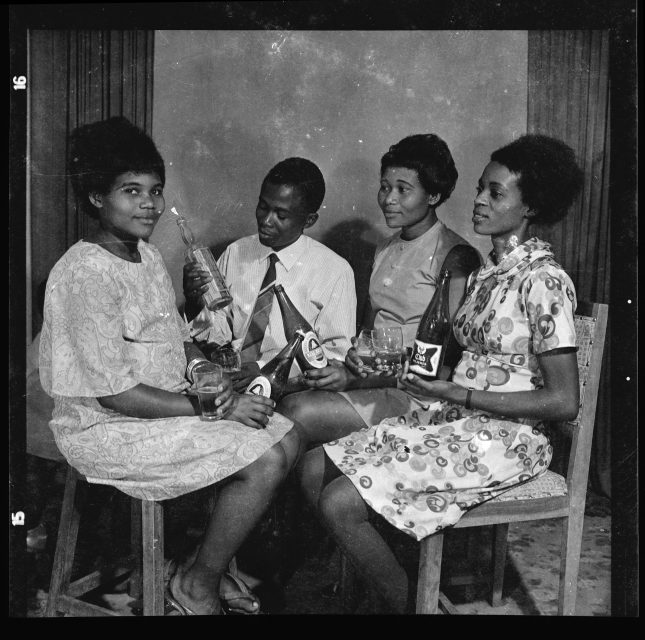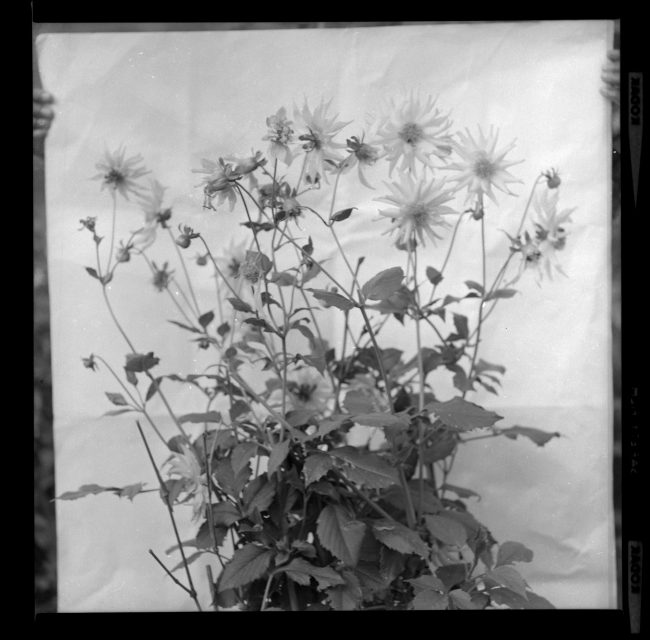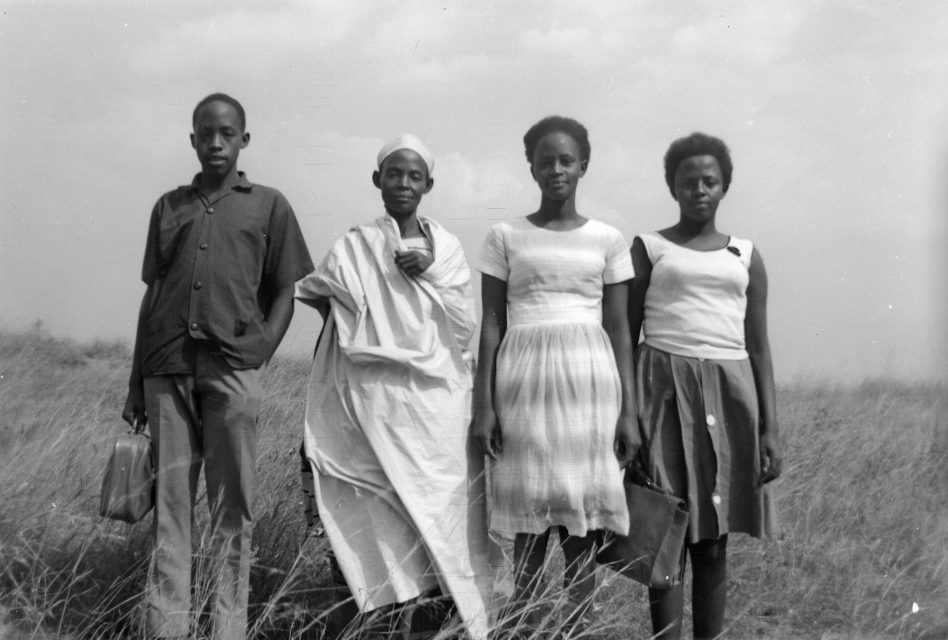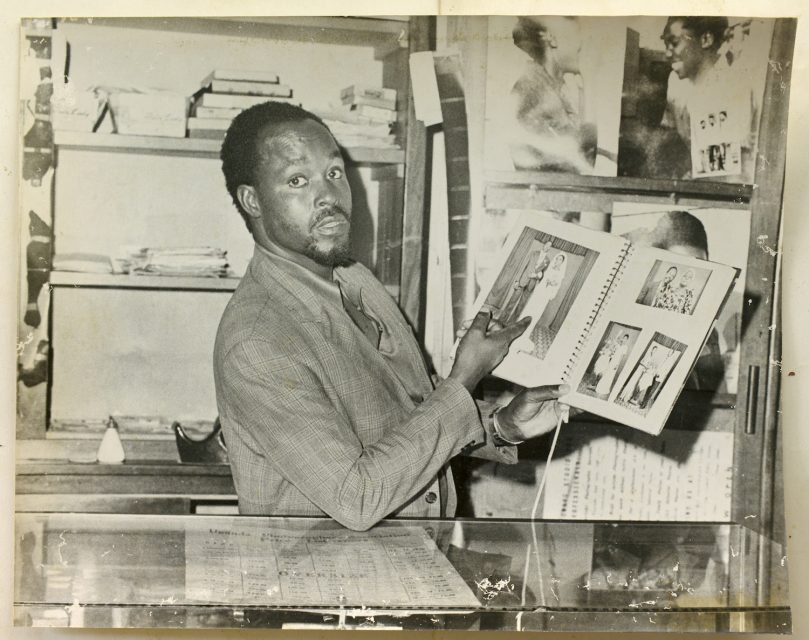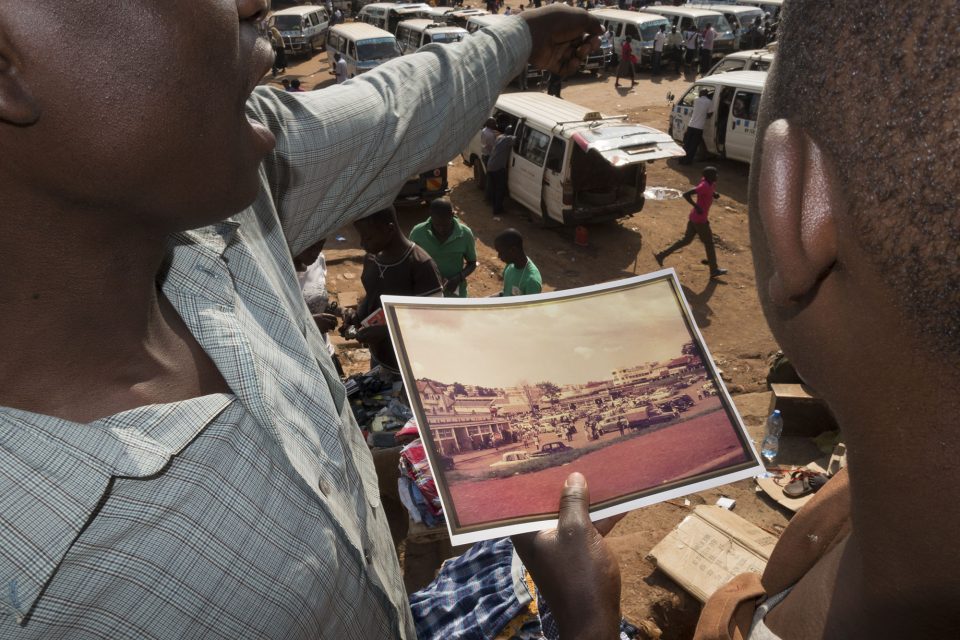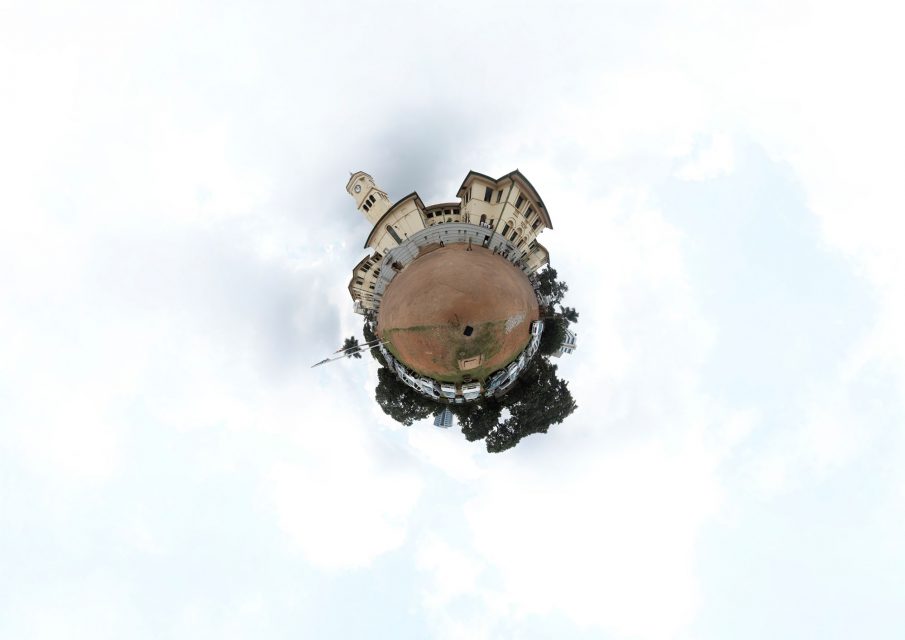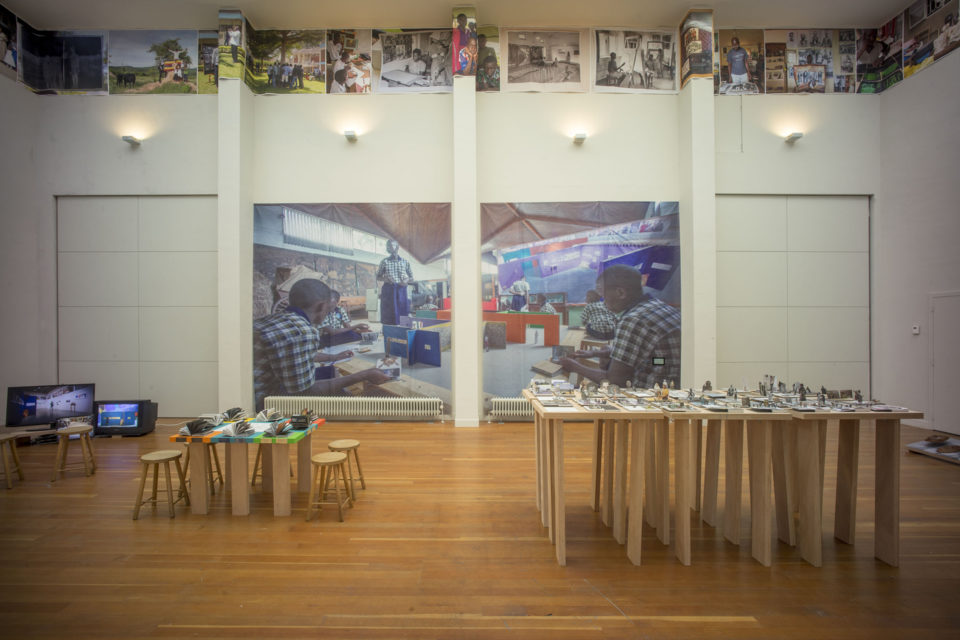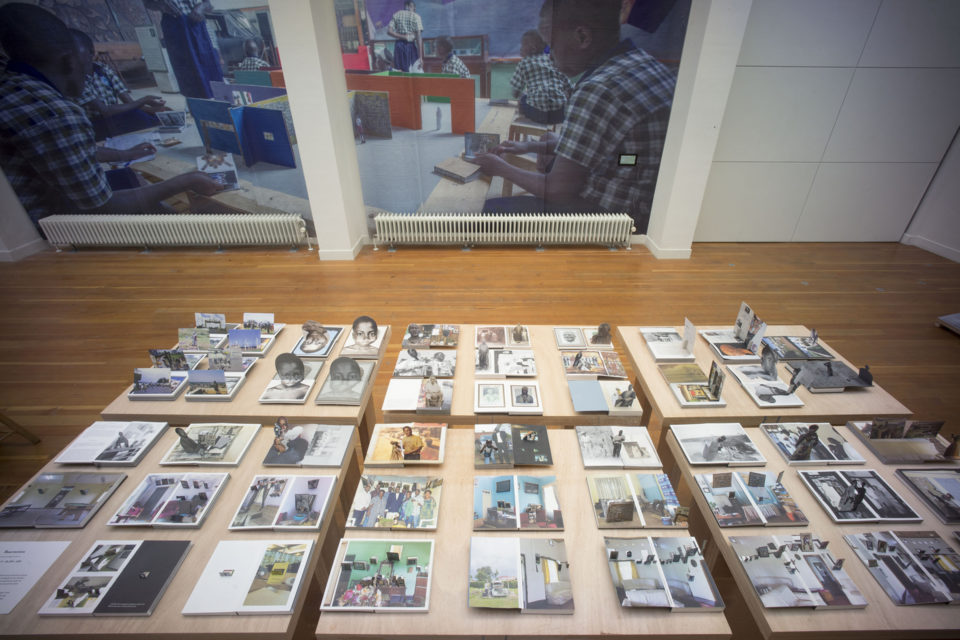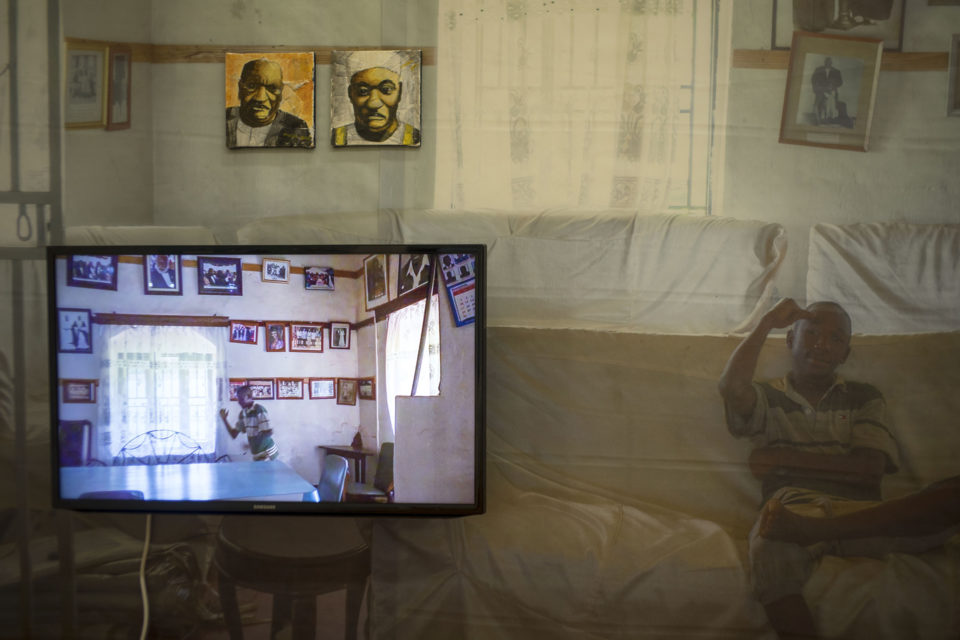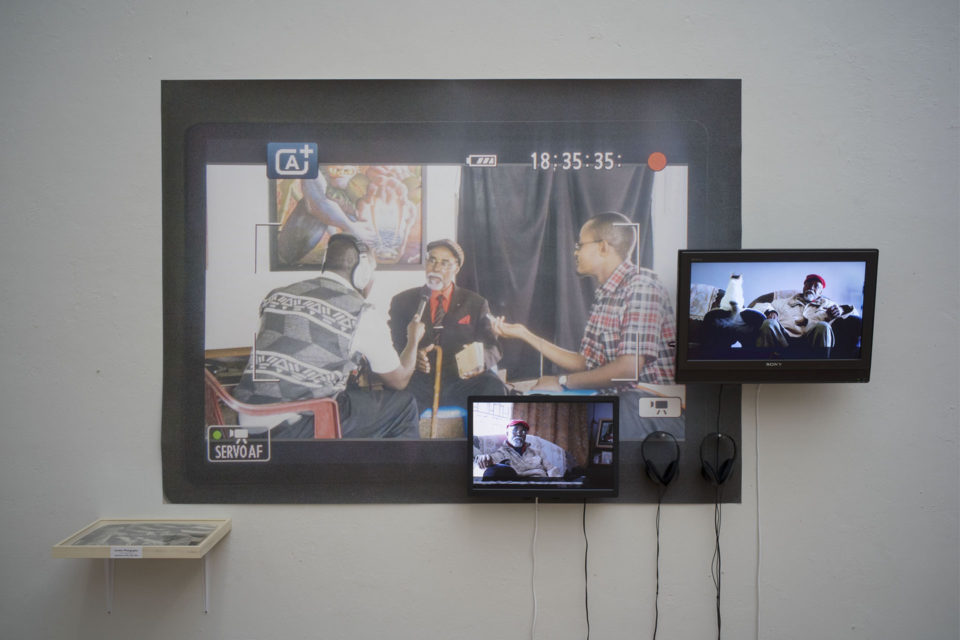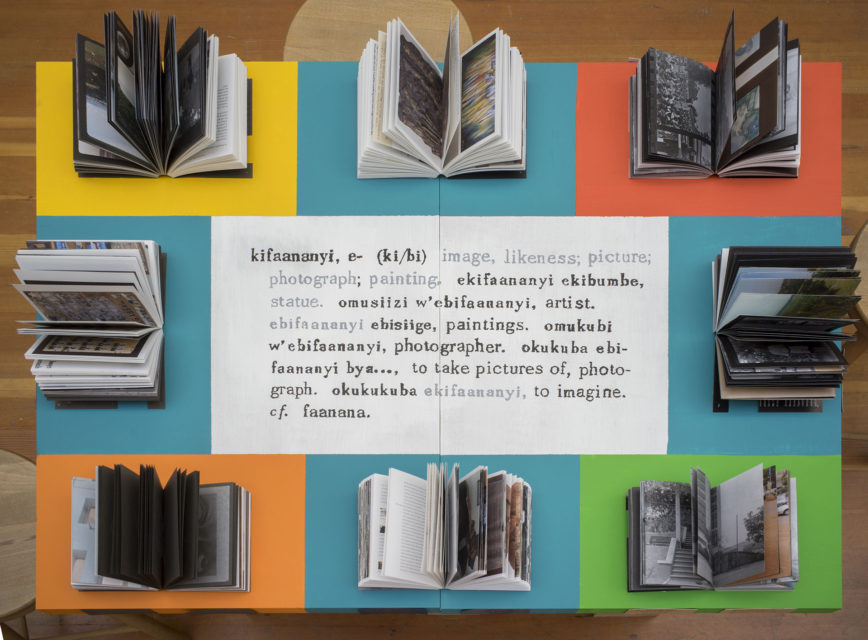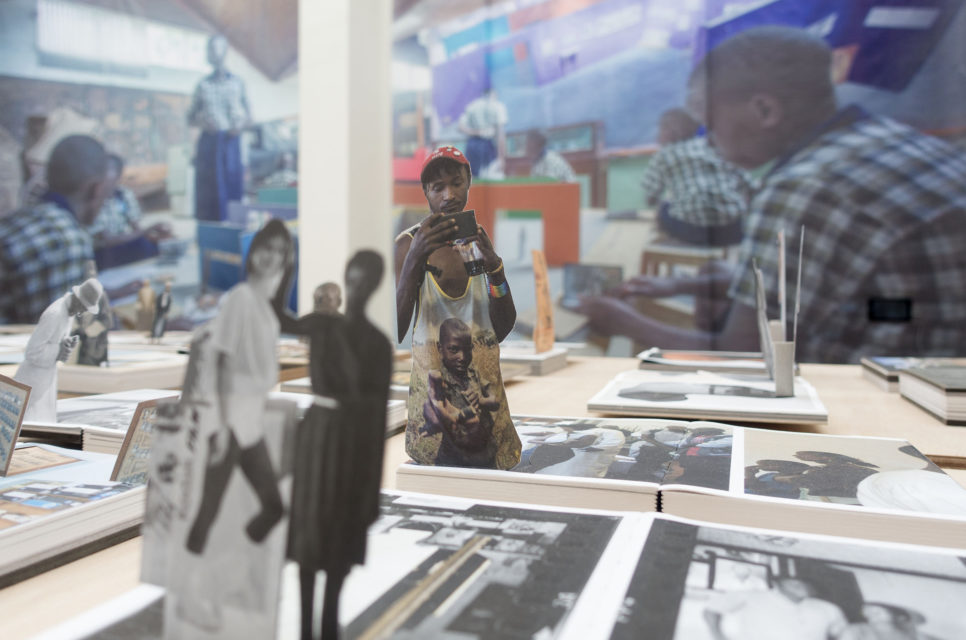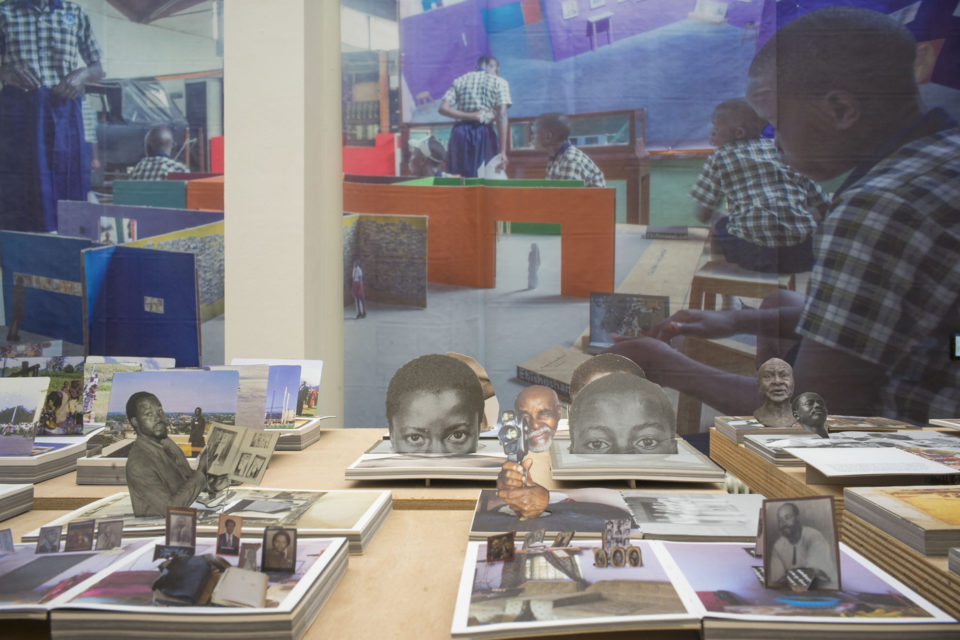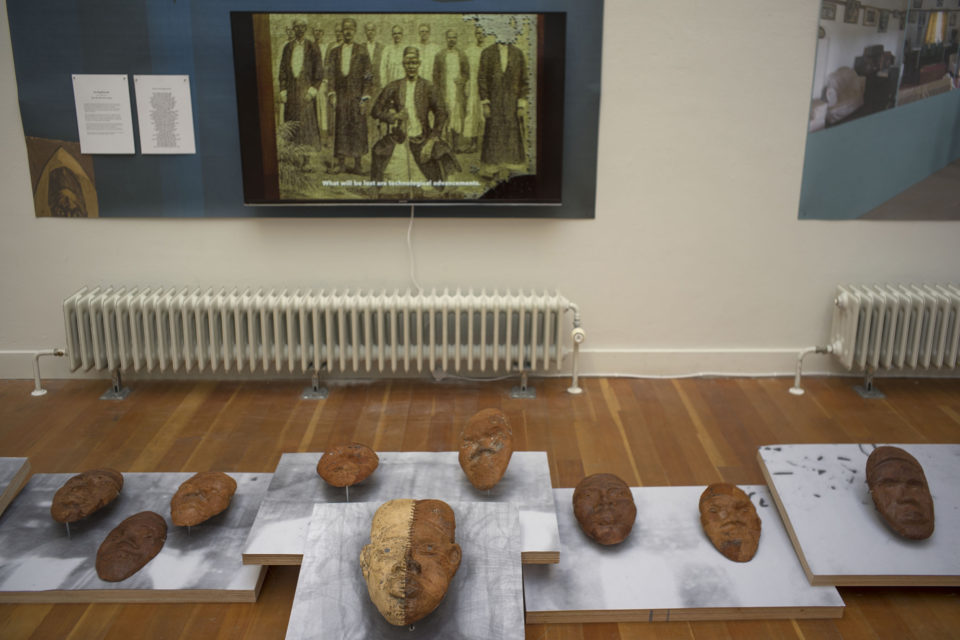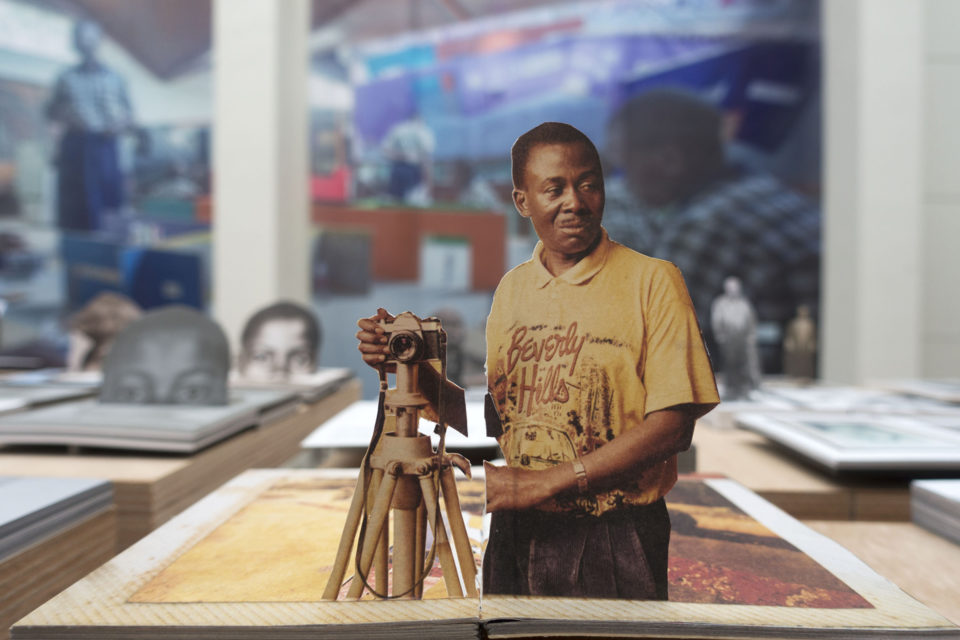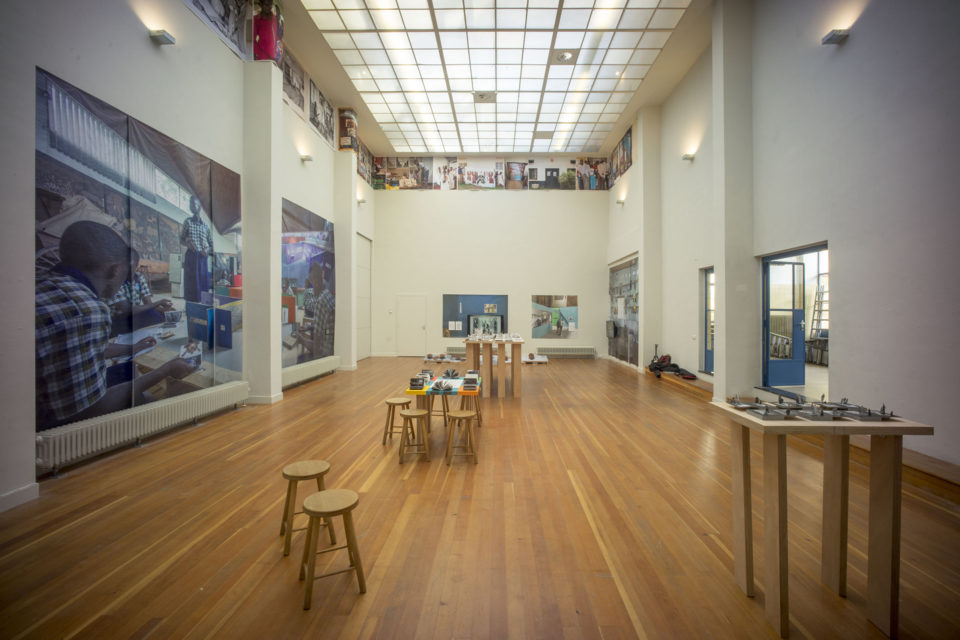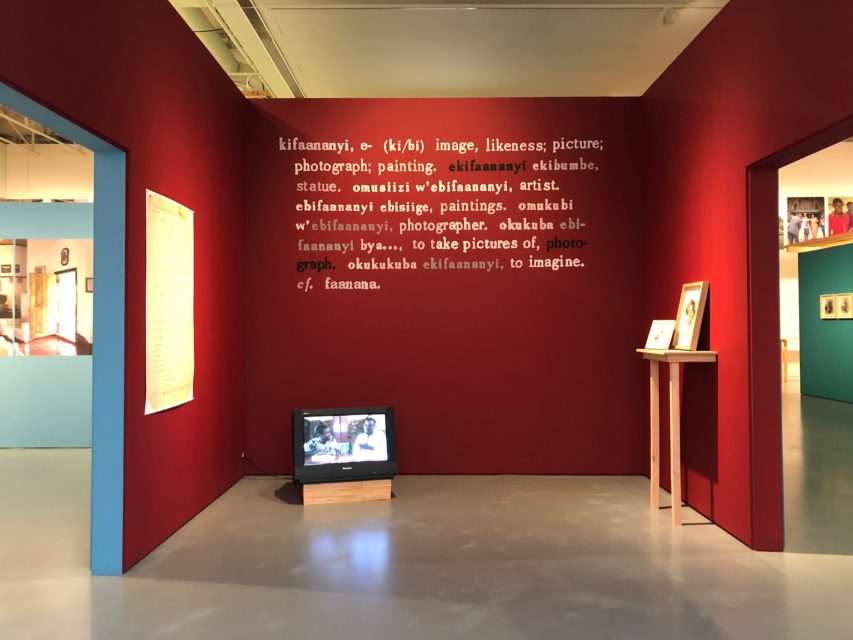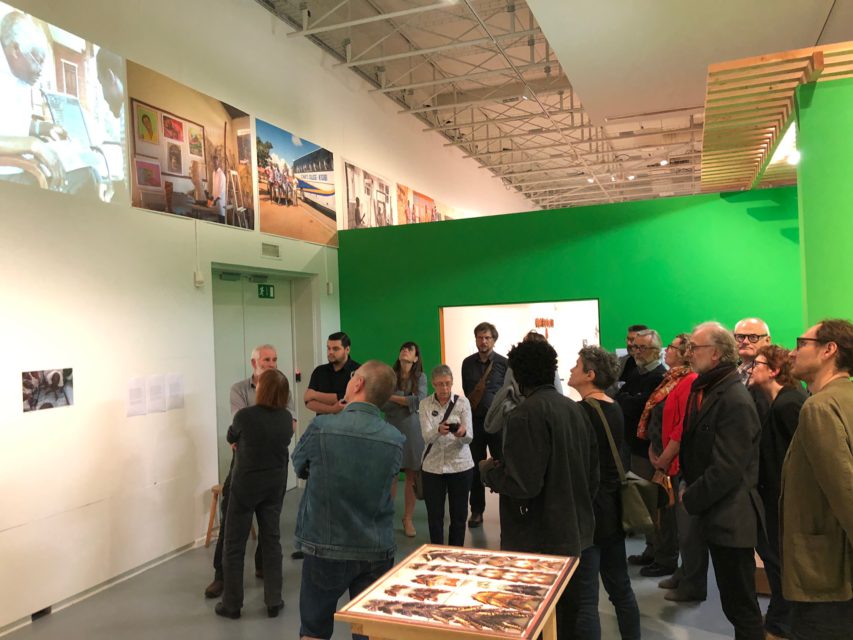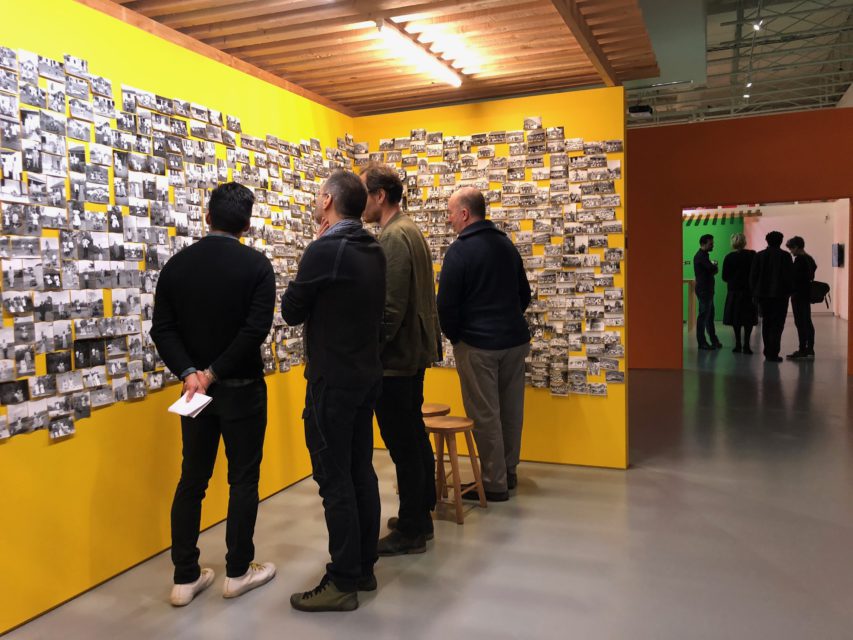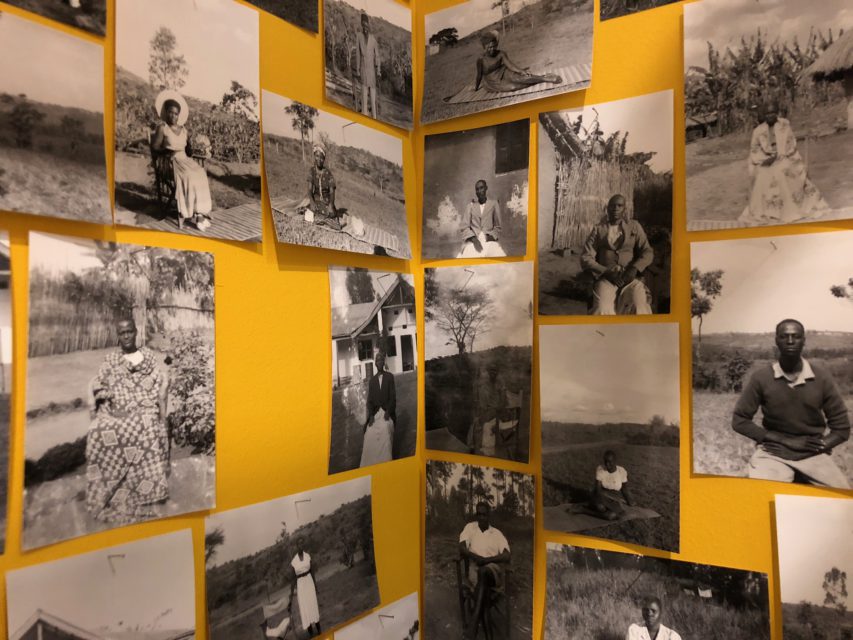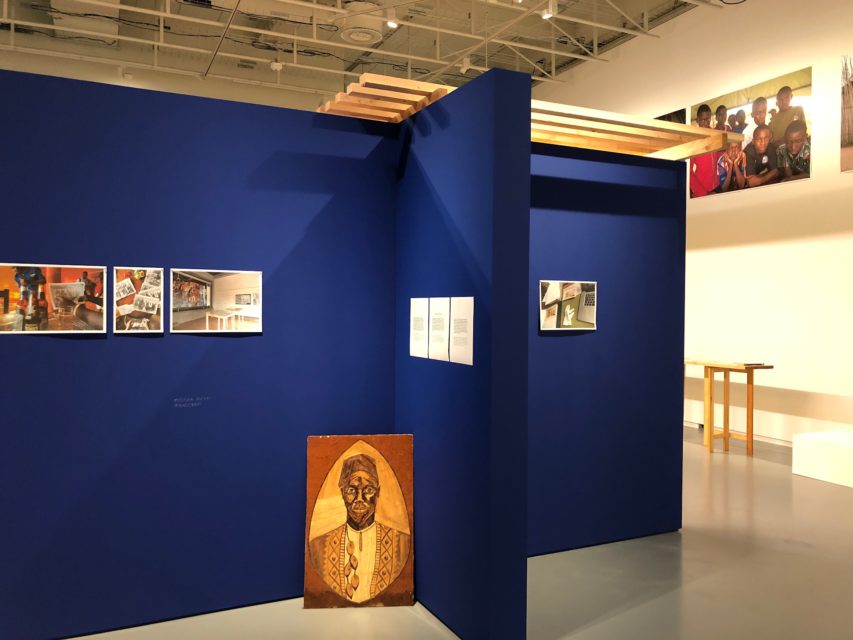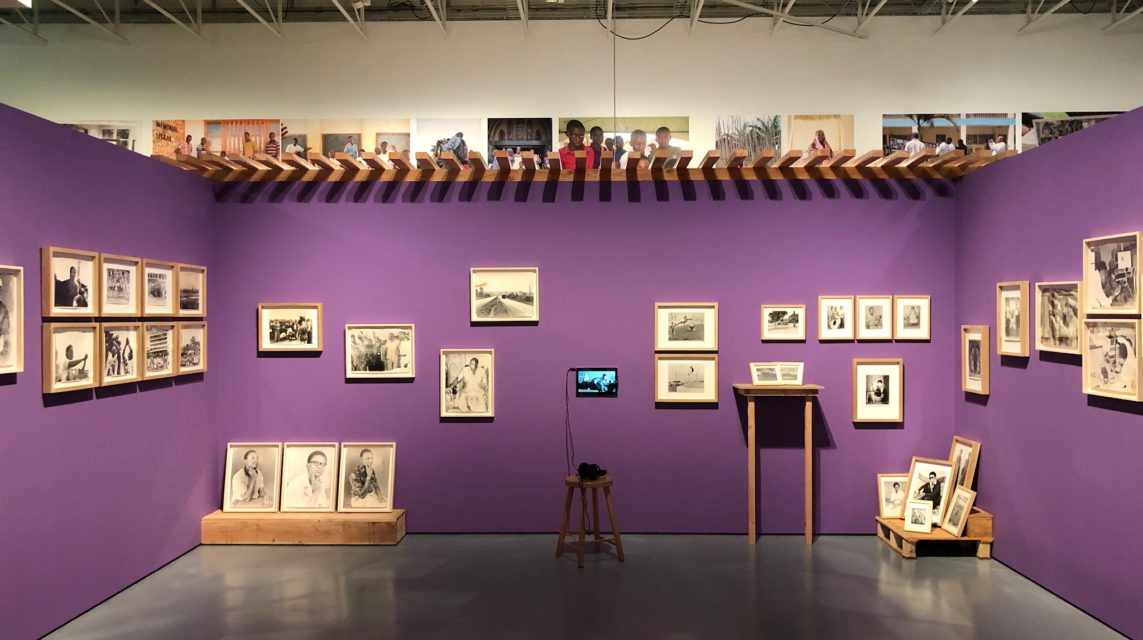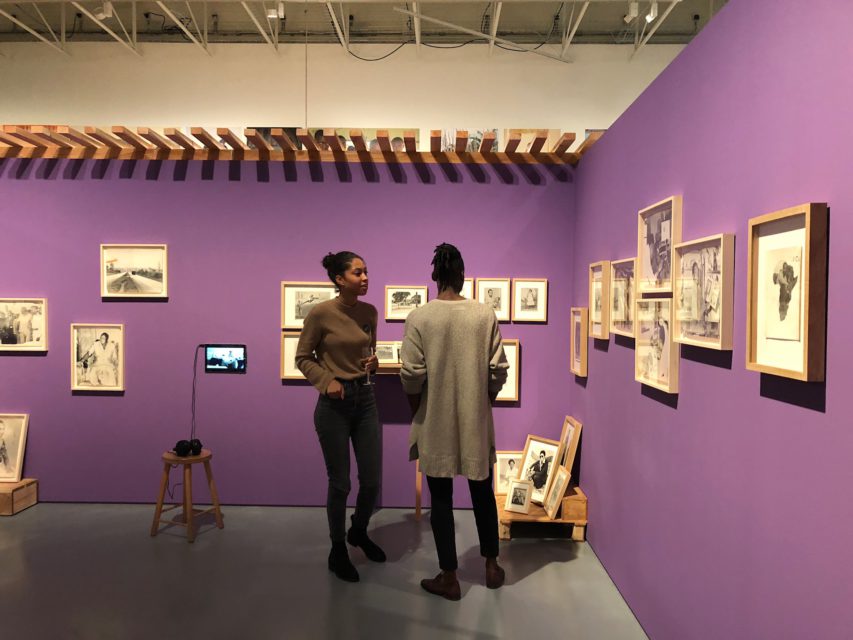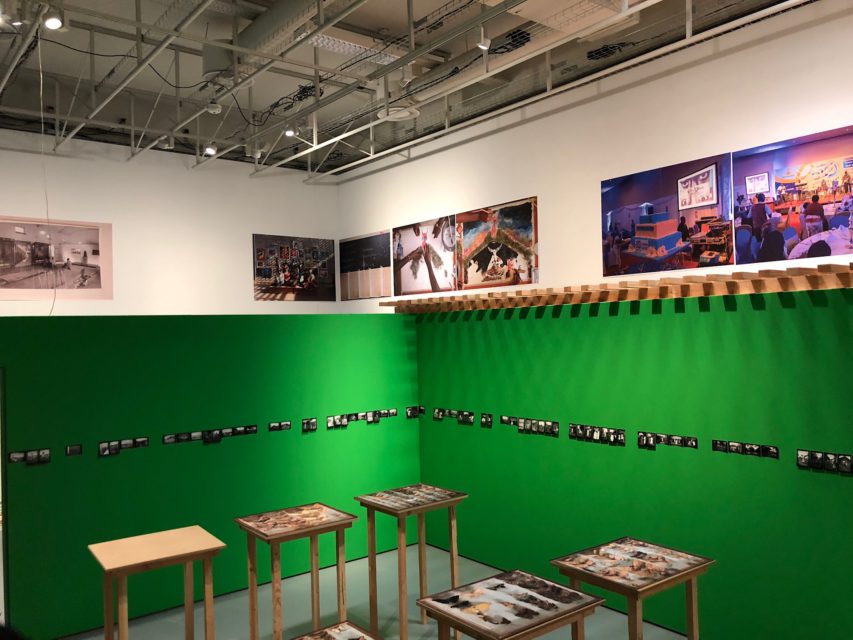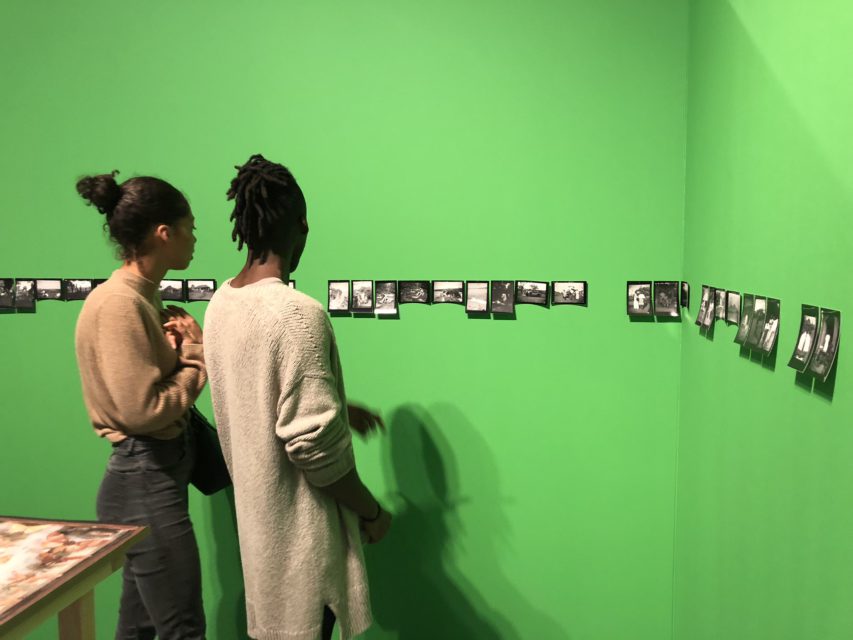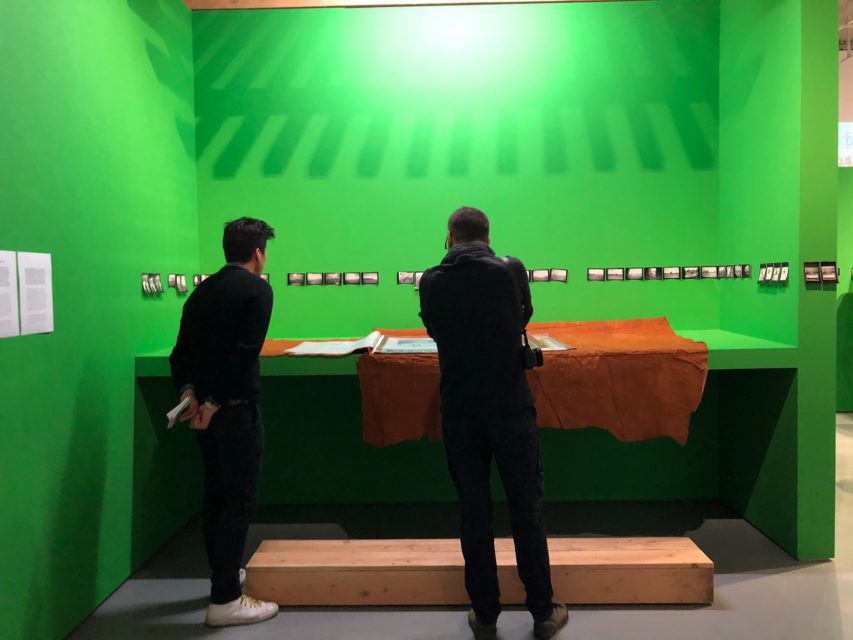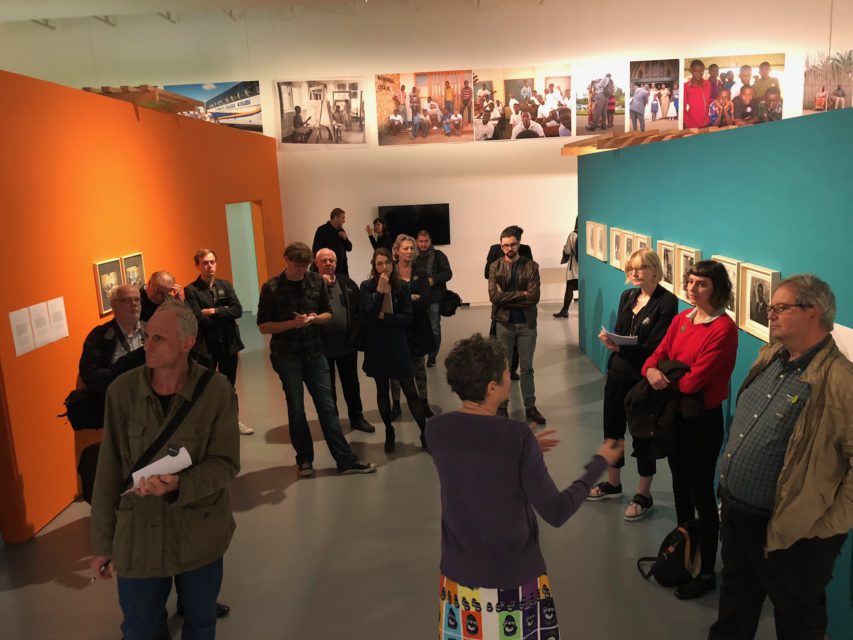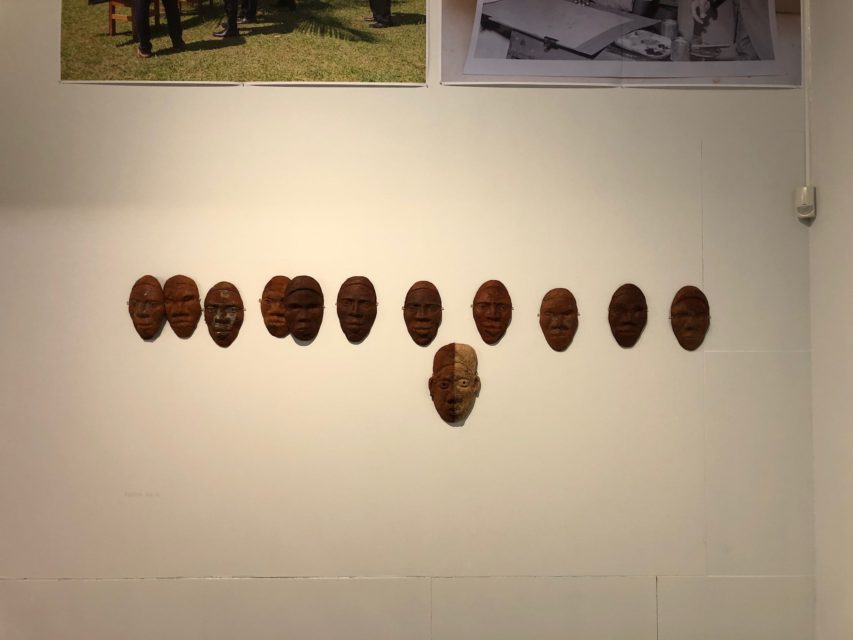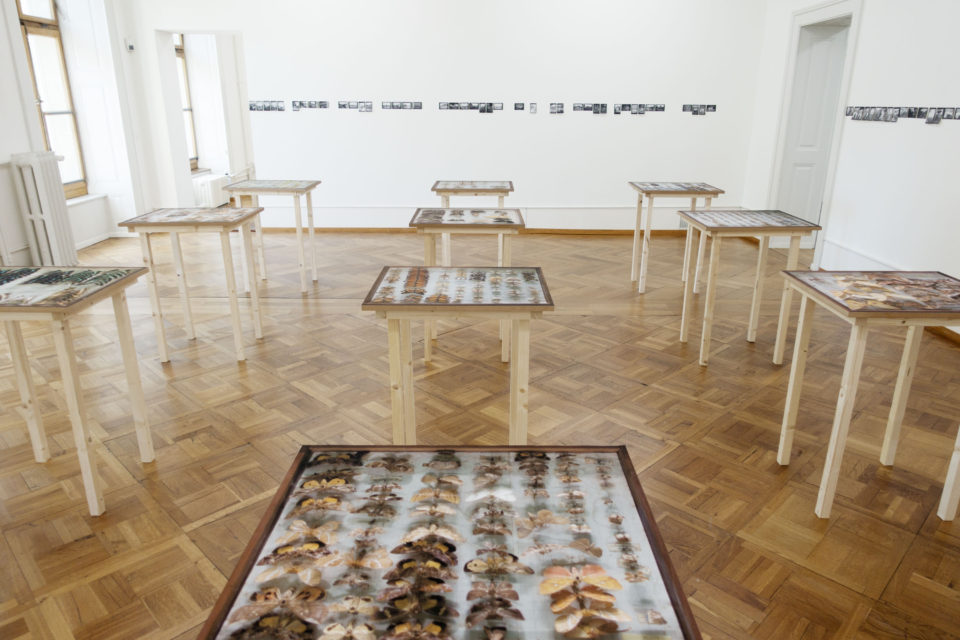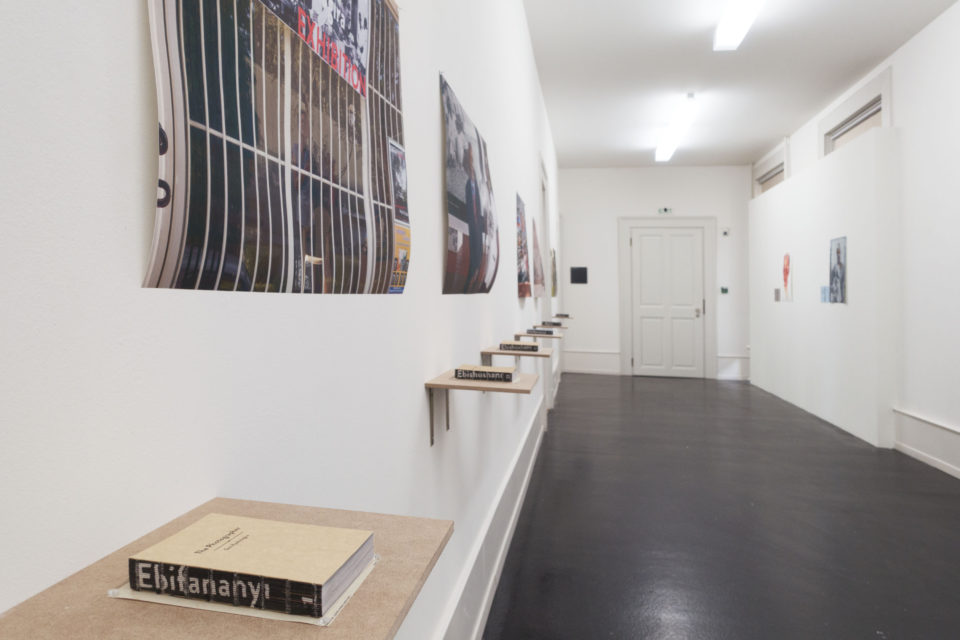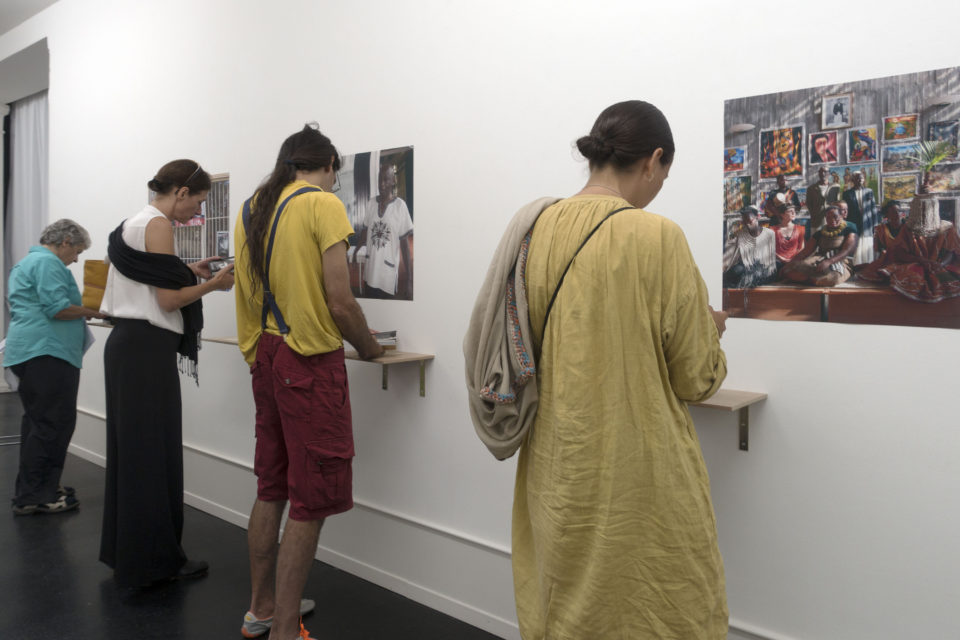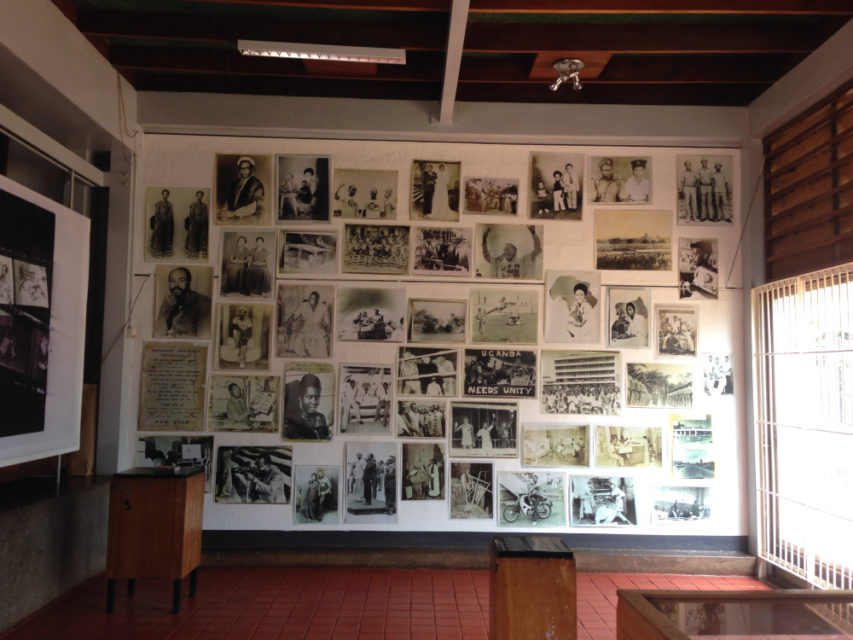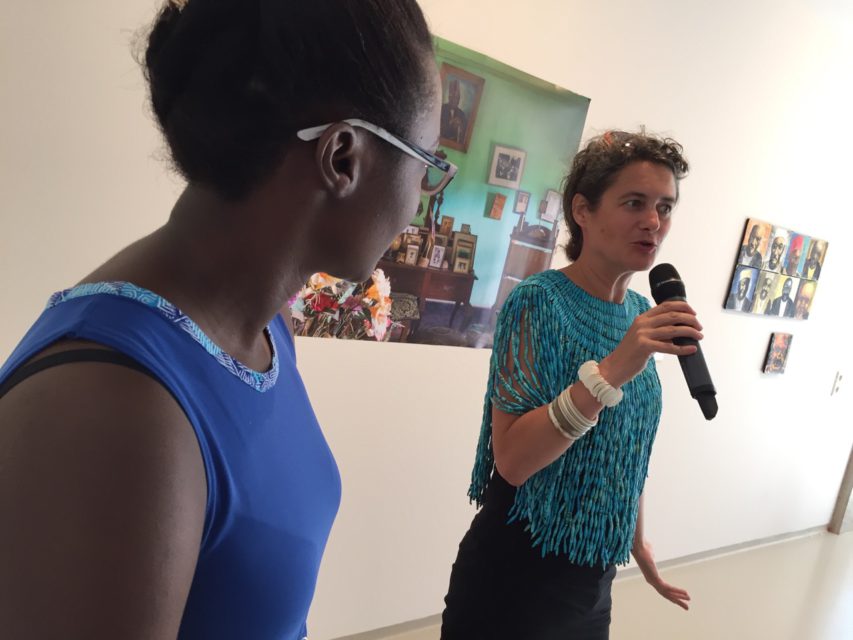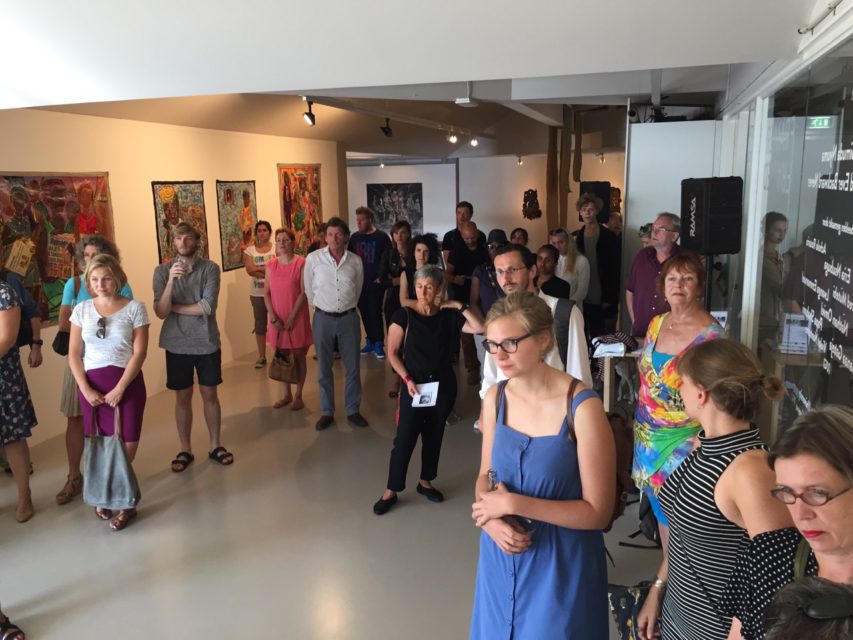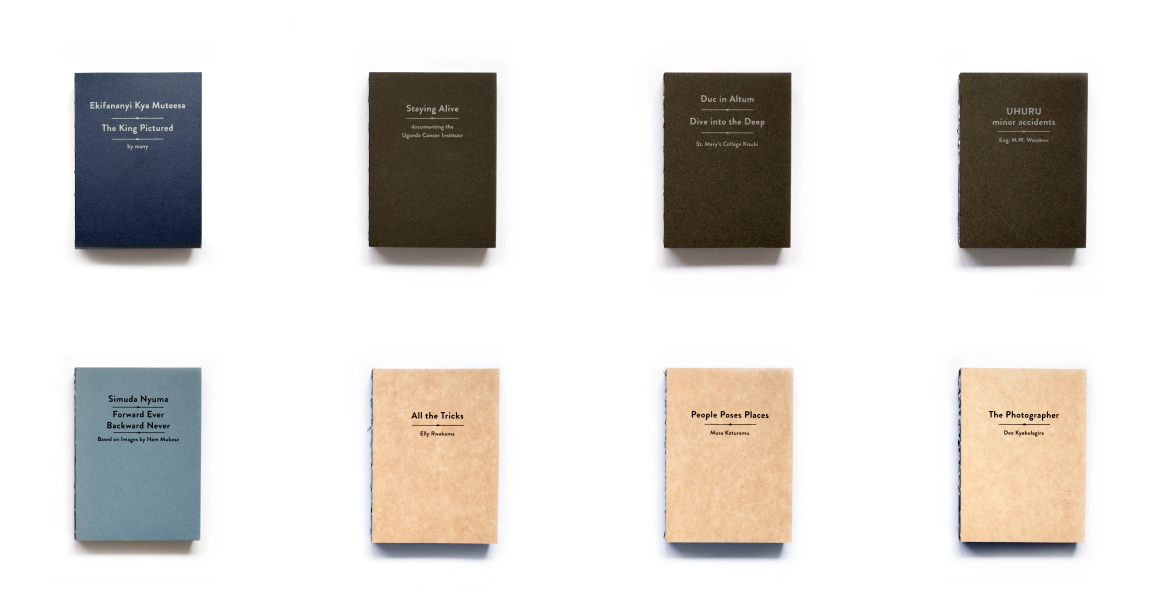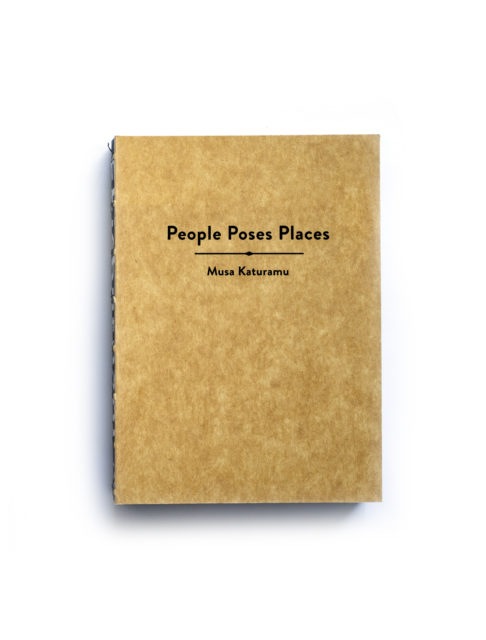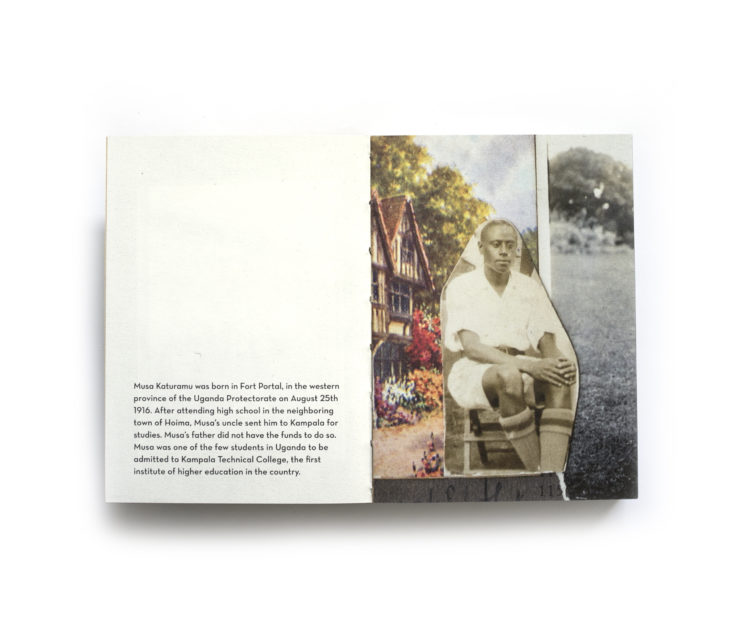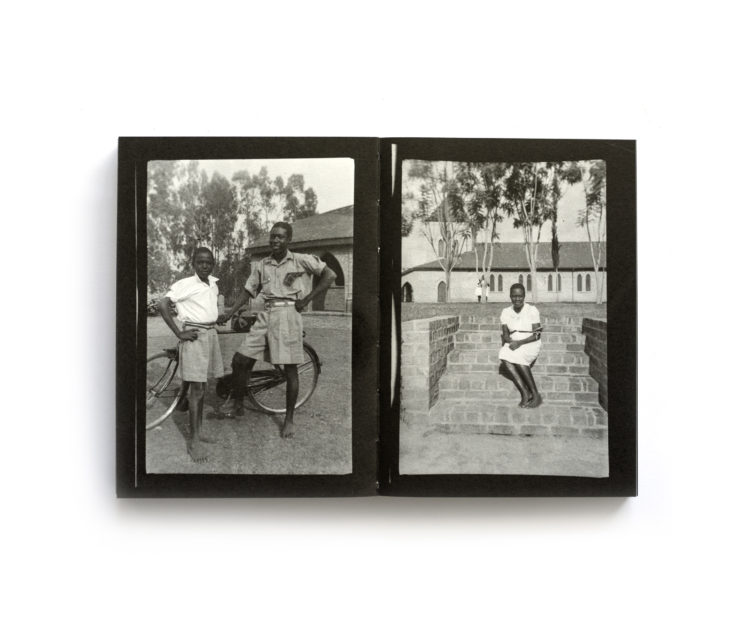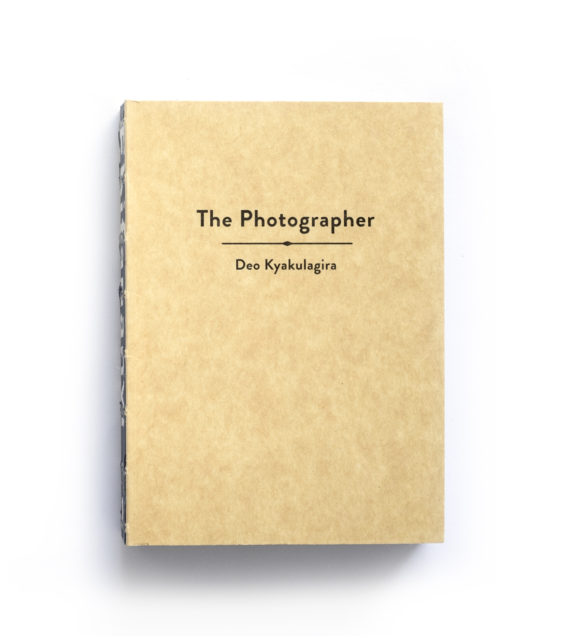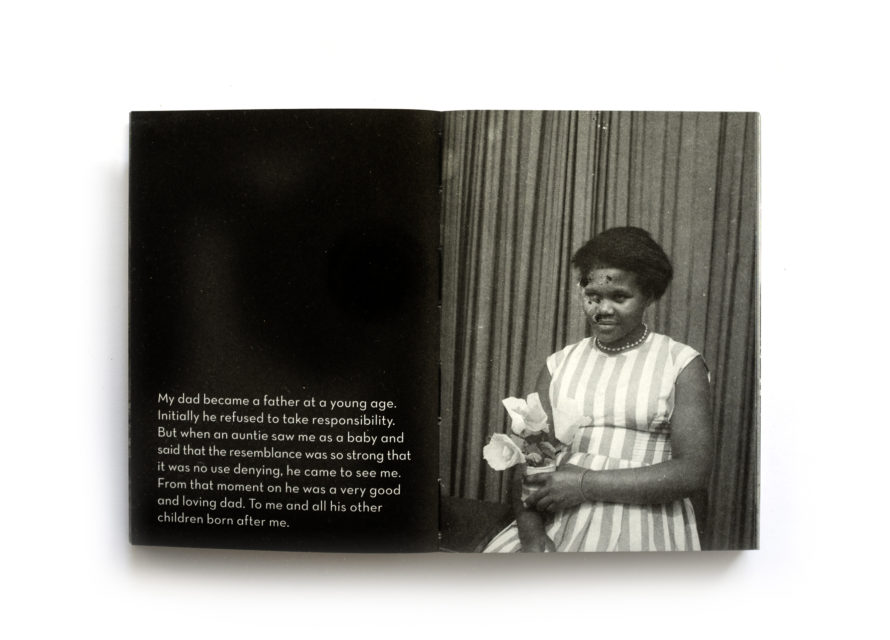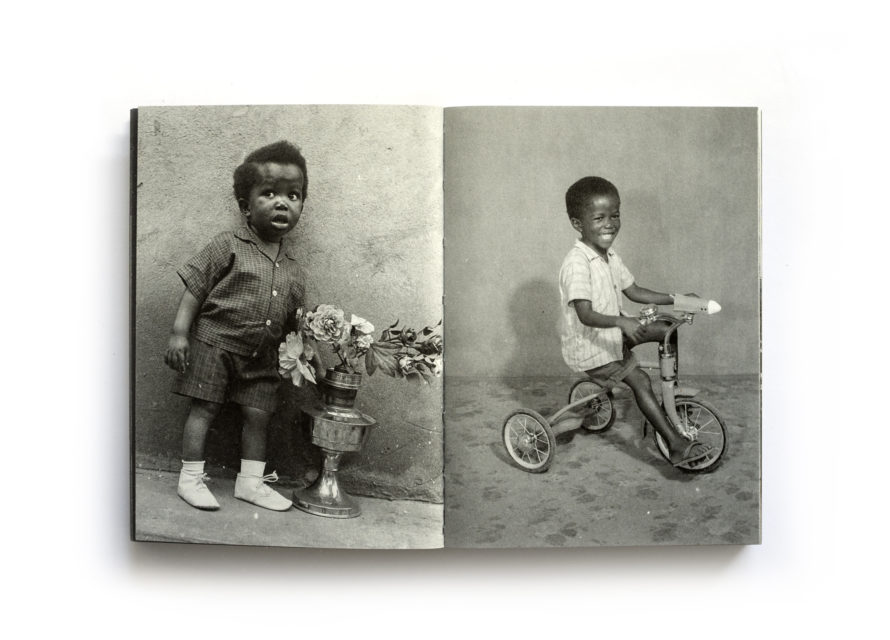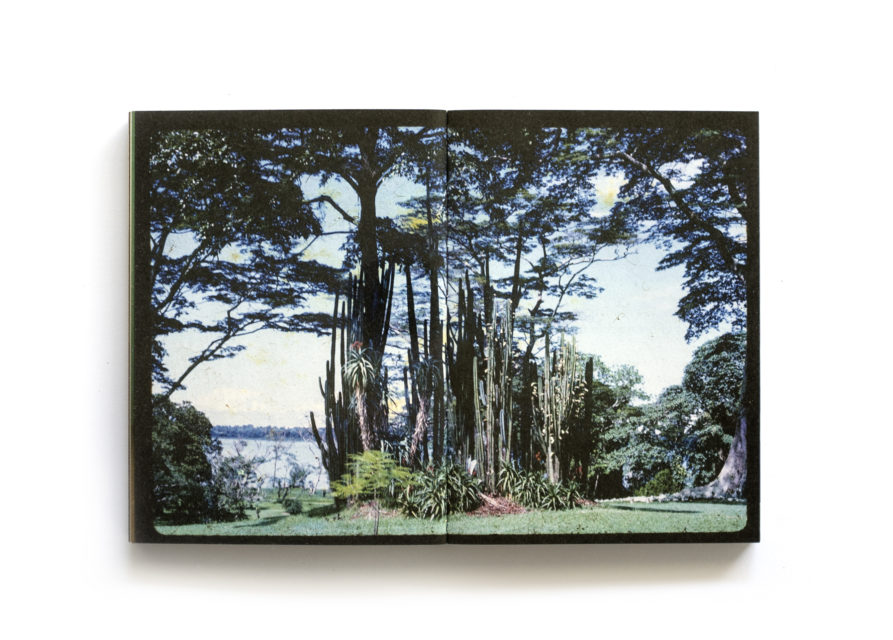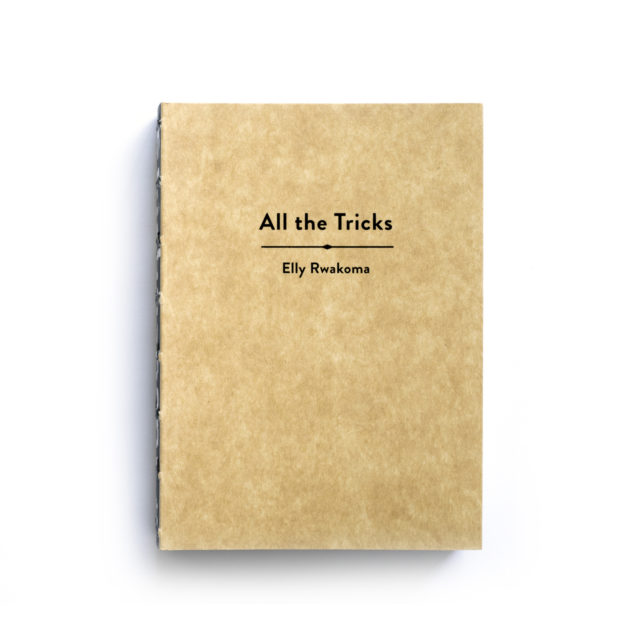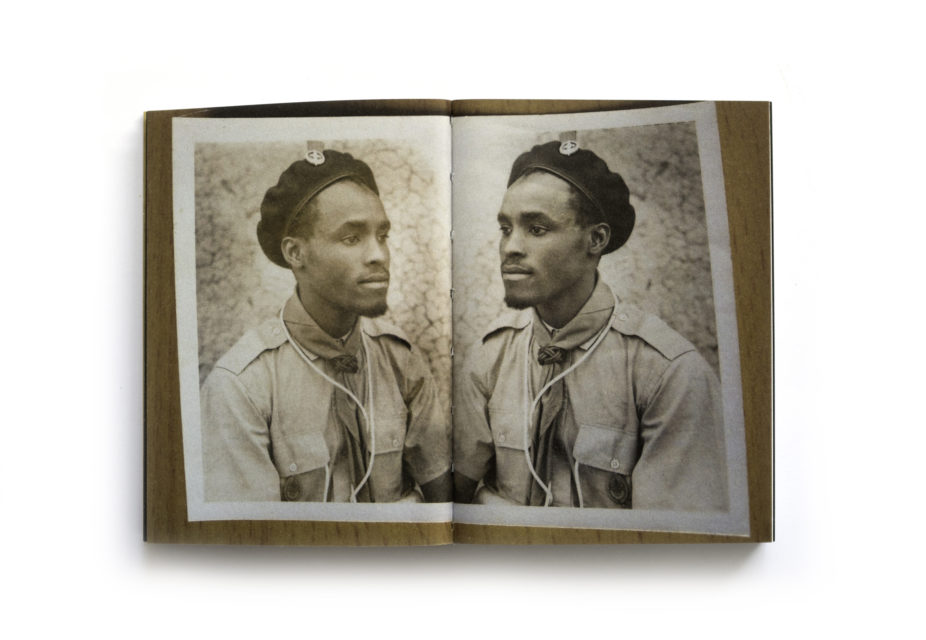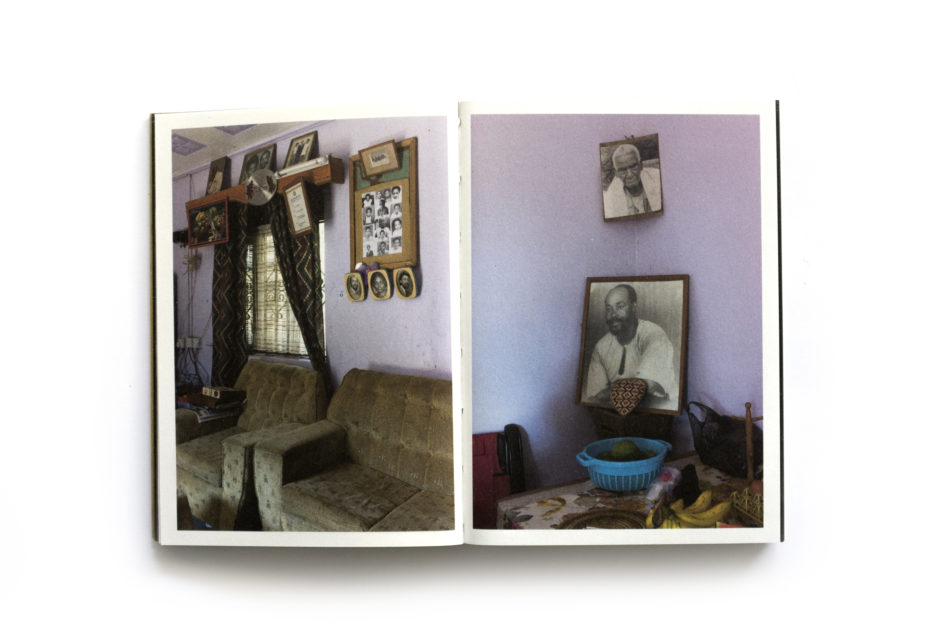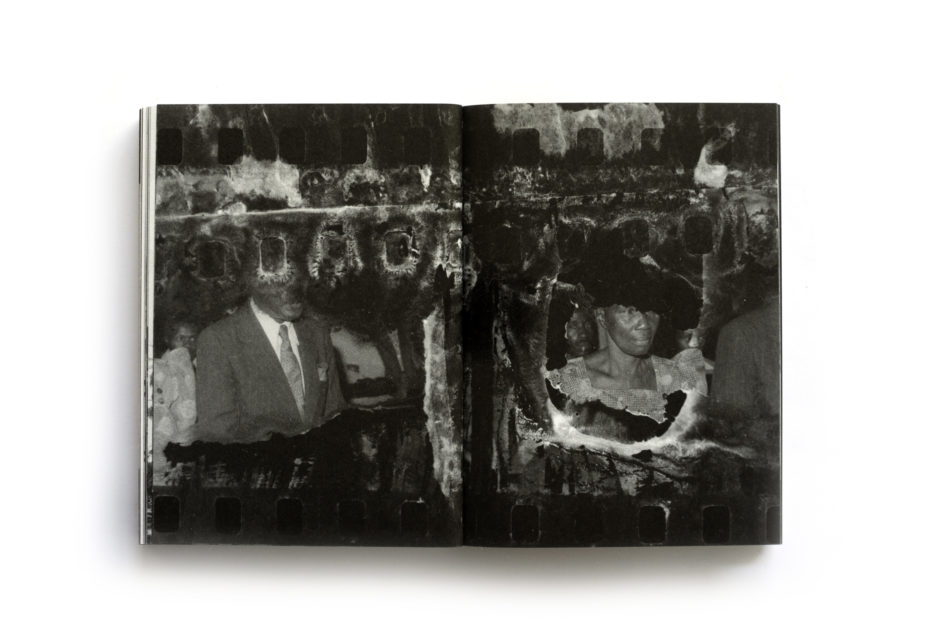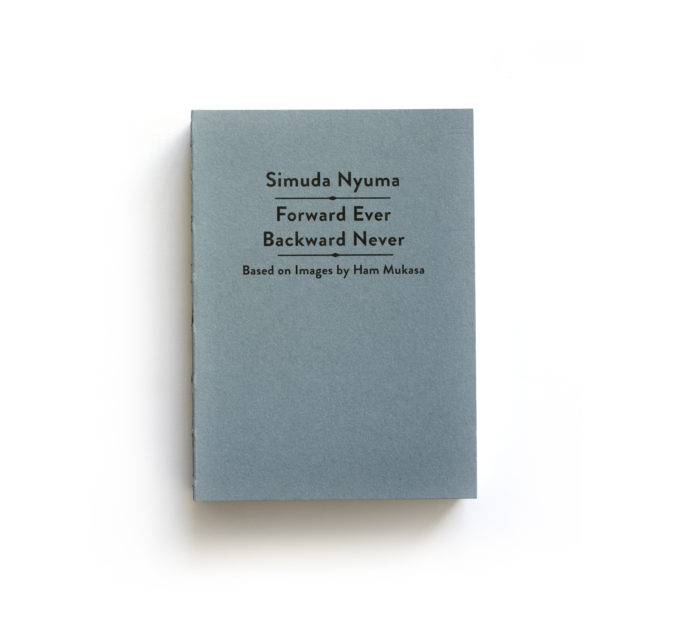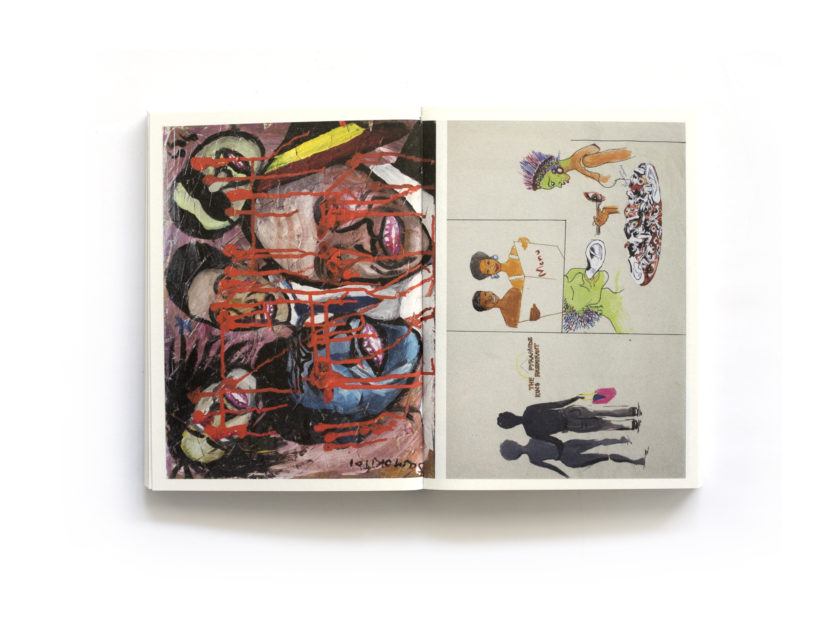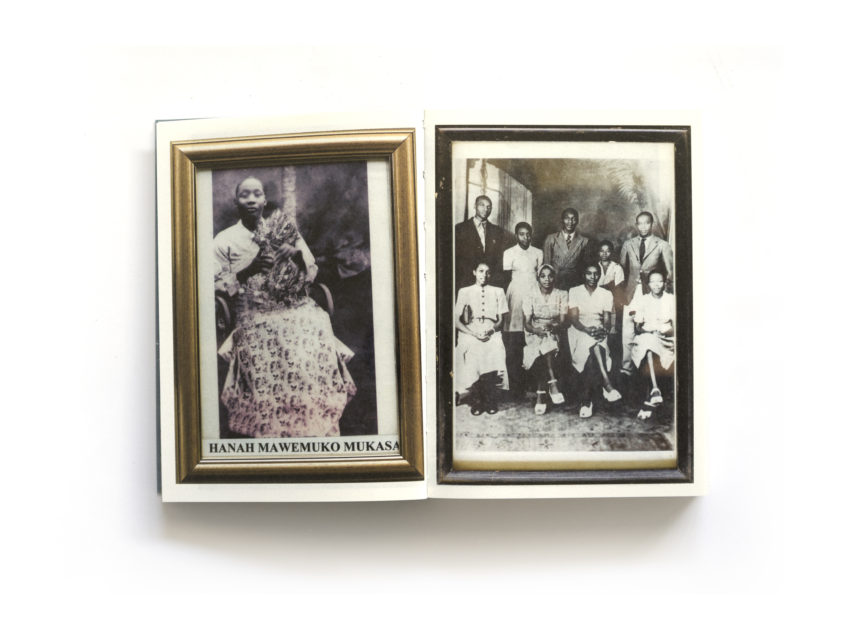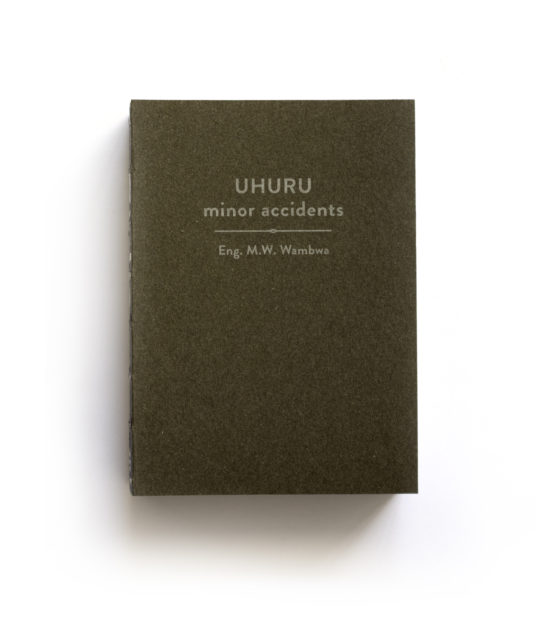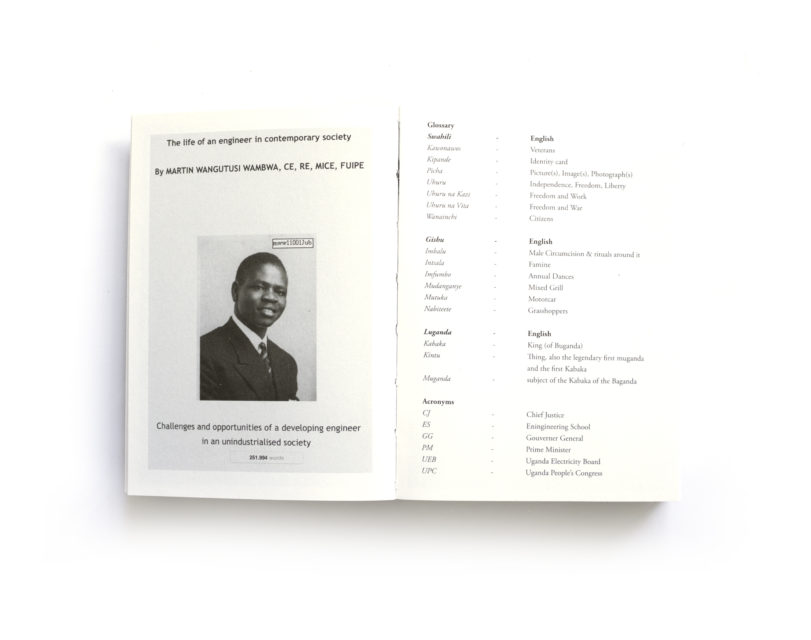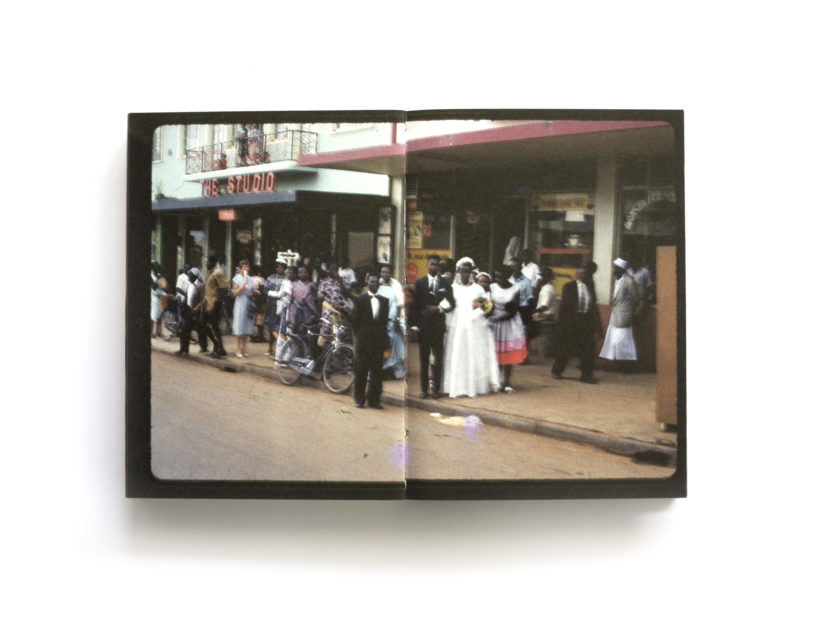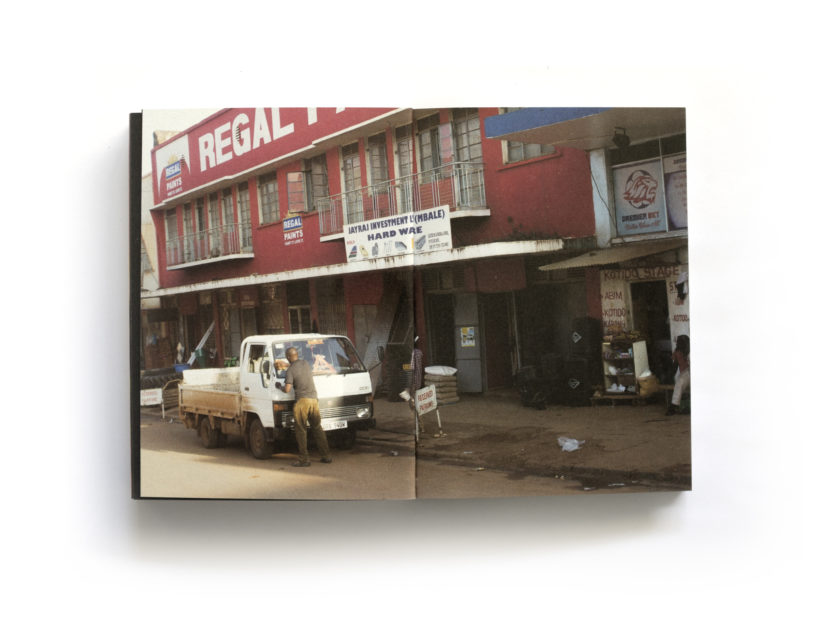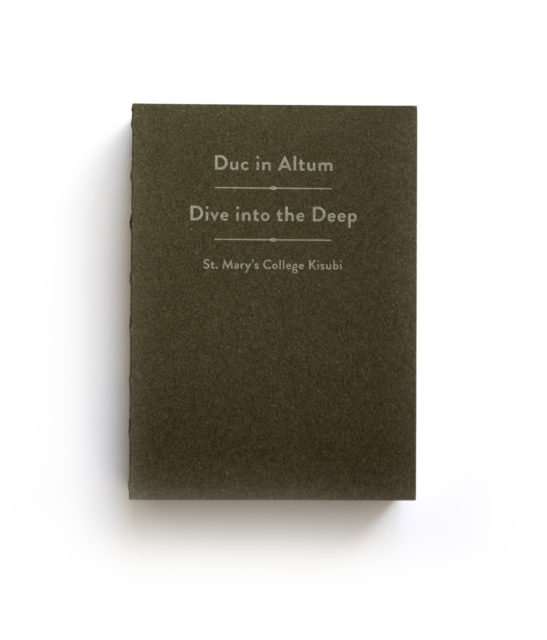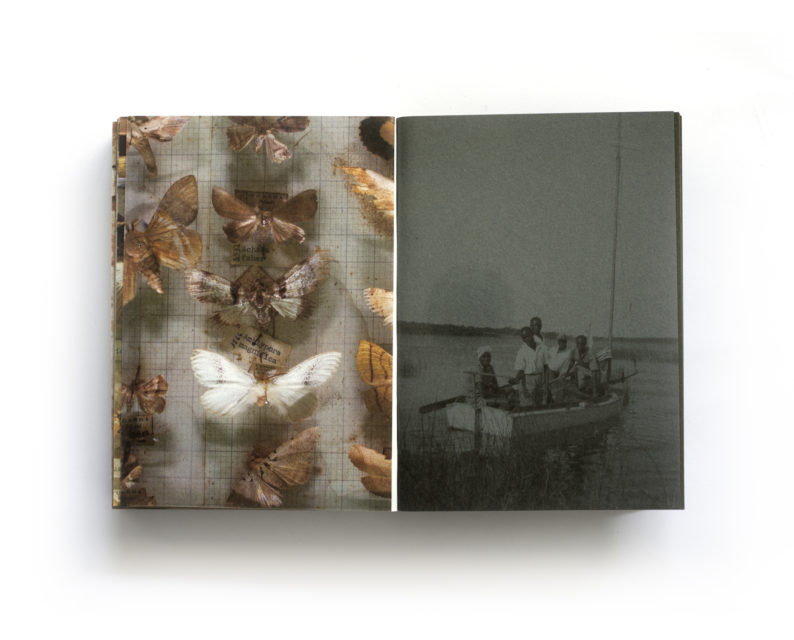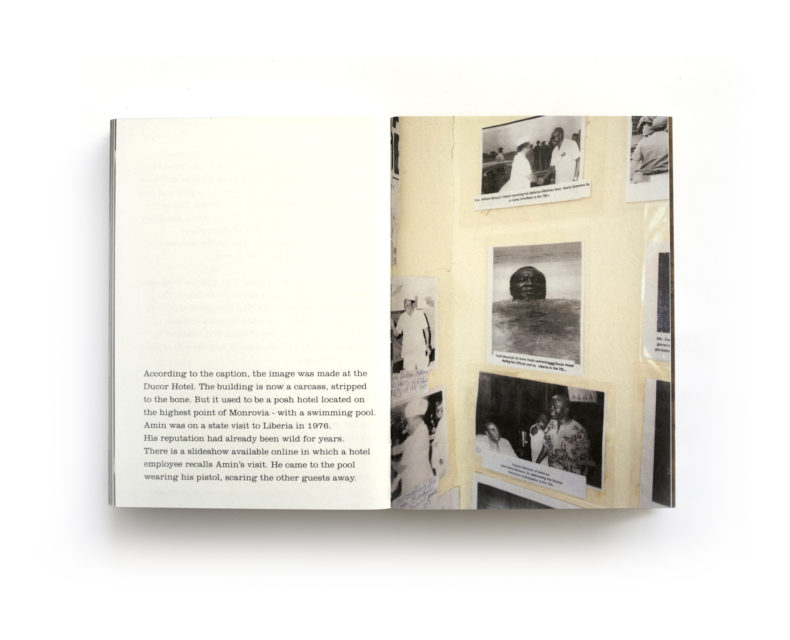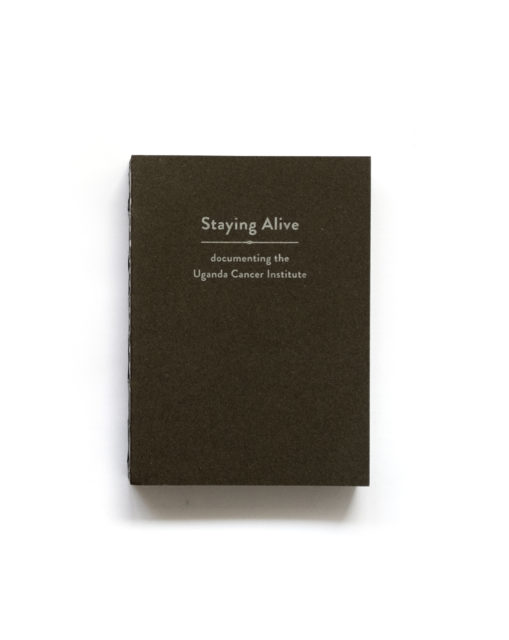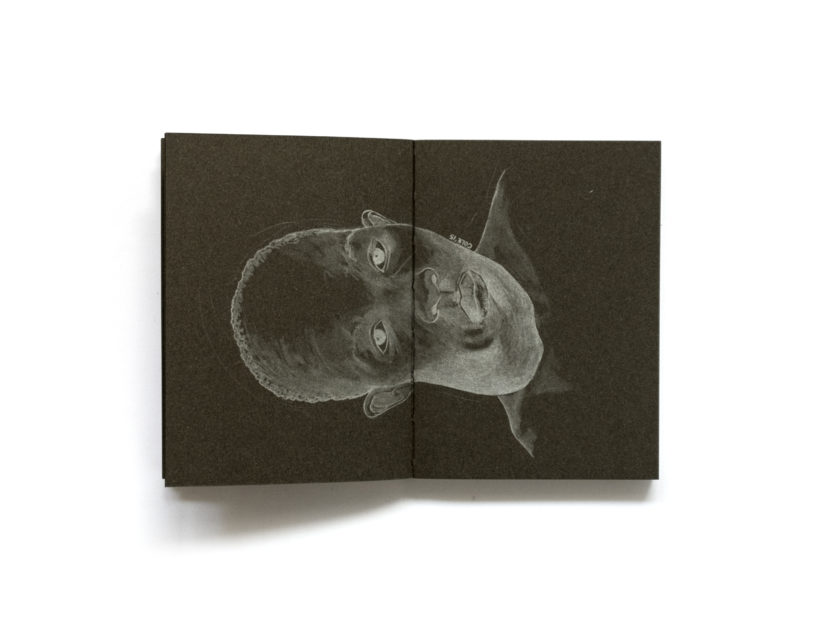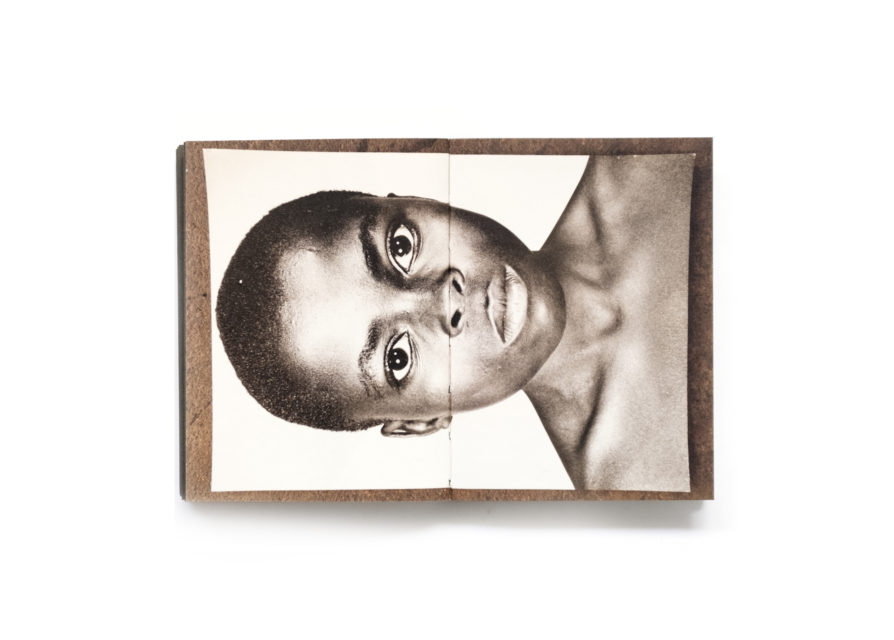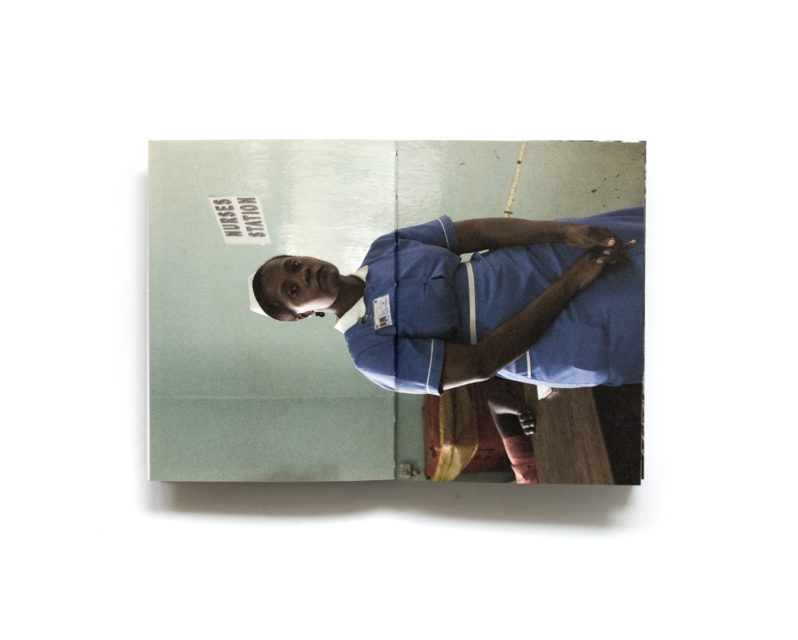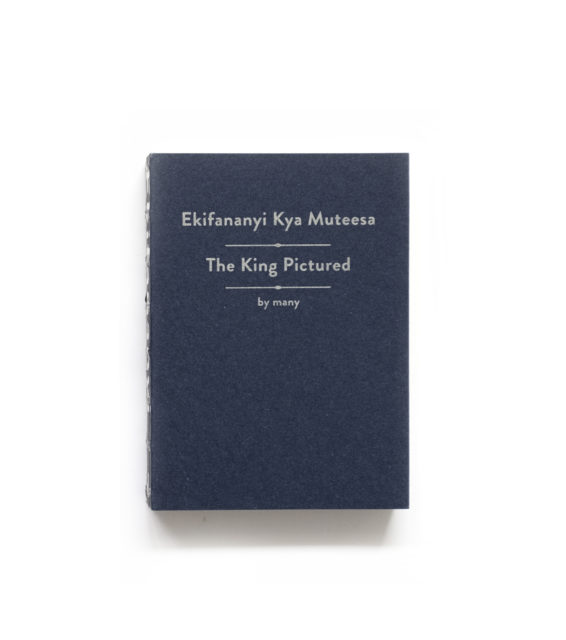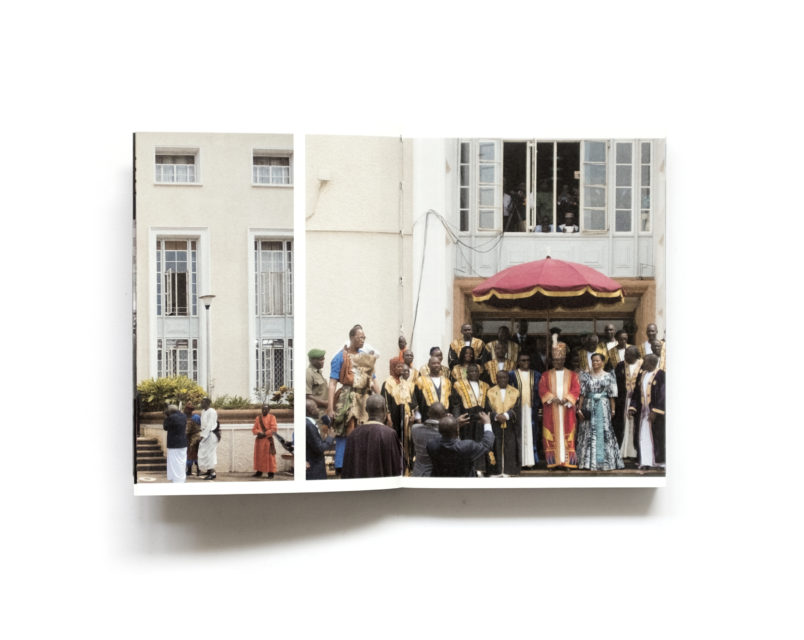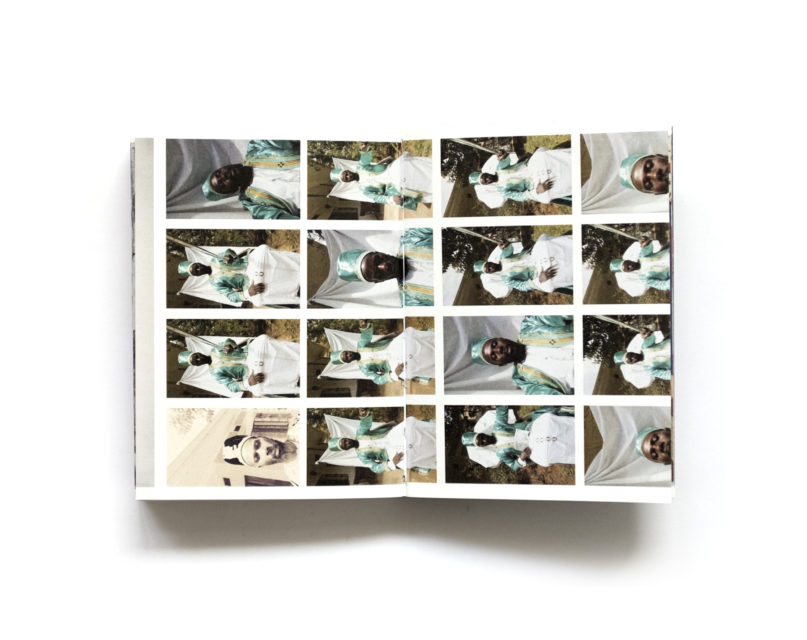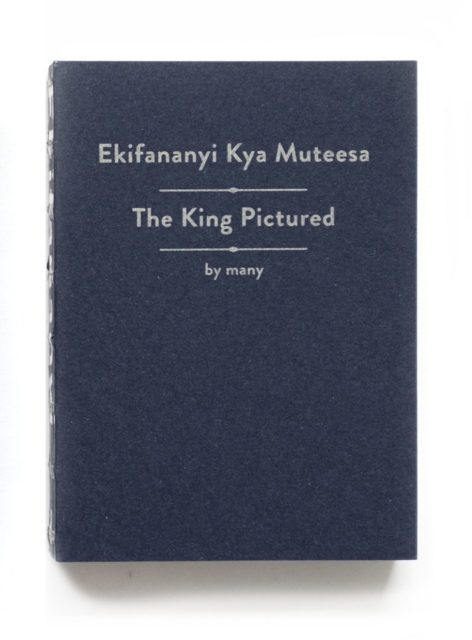Ebifananyi is the title of a series of eight publications by Andrea Stultiens and co-published by Paradox and History In Progress Uganda (HIPUganda). The noun Ebifananyi is derived from the verb Kufanana, and means to be similar to. It’s the Luganda word for photographs, but also for drawings and paintings, placing emphasis on their qualities as likenesses. Each book is based on one Ugandan photo collection. It present selected photographs from the collection as well as pictures and texts that result from the activation of the collection by Andrea Stultiens.
In 2011 Andrea Stultiens and artist Canon Griffin initiated the platform HIPUganda. They aim at digitalizing photographic material in Uganda to prevent the loss of historical collections, which are often threatened by challenging conservational circumstances. Furthermore, the they aim to bring the collections to live by connecting their content to audiences. Since both founders are also image makers and not archivists or conservators, they developed visual strategies to engage with the digitized material. The book series Ebifananyi is the first out of several projects that encourages engagement with the material that HIPUganda manages to disclose.
Exhibition
The exhibition Mutualities in the gallery of the Royal Academy of Art (KABK) in The Hague marked the occasion of Stultiens’ PhDArts dissertation on Ebifananyi and its relation to her artistic practice as a method of research. In line with Stultiens’ hybrid practice, her defence took plaxe in two public moments: within the visual arts context of the exhibition at KABK and within the academic context of the University of Leiden.
The exhibition Ebifananyi – Andrea Stultiens at Fotomuseum Antwerp (FOMU) brough together, for the first time, all the photography collections upon which the publications are based. They demonstrate the wide variety of narrative potential for historical footage. The exhibition also provided insight into responses to the collections in Uganda itself. Stultiens thus aimed to show how photographic images in this East African country are being used and questions the stereotypical imagery that is associated with Africa.
Over the past years, the books from the Ebifananyi series, were used as starting point for several exhibitions. The annual HIPUganda exhibition at Makerere University Art Gallery 2015 was dedicated to the presenting work of Musa Katuramu and Elly Rwakoma, respectively Ebifananyi II and Ebifananyi III. In 2015, Andrea Stultiens and Robinah Nansubuga curated the group exhibition Simuda Nyuma – Forward Ever Backward, with work inspired by the archive of the Ugandan chief Ham Mukasa (Ebifananyi IV).
Ebifananyi IV inspired Stultiens to create the installation Go Forward, on show as part of the group exhibition Global Imaginations in the Meelfabriek Leiden in 2015. Twenty contemporary artists were invited by Museum De Lakenhal to show their vision on our globalized world. In 2016 the Ebifananyi photos were on show in an installation at Pasquart Photoforum in Biel (CH) together with the works of photographer Flurina Rothenberger. Both Stultiens and Rothenberger are investigating the African continent with great care.
Books from the Ebifananyi series
Set 1, Book 1, 2 and 3; the photographer’s trilogy.
The first three books in the Ebifananyi series form a trilogy. Each one of these books is based on the work of one Ugandan photographer and tries to show the diversity within and between their respective practices.
Ebifananyi 1 – The photographer – Deo Kyakulagira
Deo Kyakulagira (1940-2000) lived for his family and photography. He operated several studios from the early 1970s until his untimely death in 2000. He worked for the Ministry of Agriculture and for the Department of Medical Illustration of Mulago Hospital. Deo Kyakulagira did not exhibit his work during his lifetime. Like many of his colleagues he was not recognised as an author for the work he did.
In Ebifananyi 1 the reader gets to know Deo Kyakulagira through the likenesses he produced of himself, and the way he documented the world around him, partly as a father, partly as a professional photographer. Stories told by family members and others remembering the studio Deo ran in the 1980s and 90s named Central Art Studio Ltd give an idea of the context in which Deo Kyakulagira’s most succesful business operated and developed.
Ebishushani 2 – People Poses Places – Musa Katuramu
In People Poses Places Stultiens focusses on teacher, carpenter and cattle keeper Musa Katuramu (1916-1983). From the late 1930s he started to make portraits of family and friends with a simple box camera, using the Western Ugandan landscape as a backdrop. Nevertheless, Katuramu was one of the few who owned a camera and knew the people posing and their world. Most camera owners were outsiders such as missionaries or colonists. It makes his portraits remarkably intimate. Katuramu’s archive was carefully stored by his son Jerry Bagonza. The archive consists of roughly 1500 negatives and 750 prints that have never been shown before. The book is composed of archival images that alternate with contemporary photographs made by Andrea Stultiens and her colleague Canon Griffin, who grew up in the same region as Katuramu.
Ebishushani 3 – All the Tricks – Elly Rwakoma
All the Tricks presents pictures made by Elly Rwakoma (ca. 1938). In addition he tells the reader how he became interested in photography, and how events related to photography had an impact on his life.
Rwakoma ran a photo studio and was a presidential photographer as well as a social worker and a businessman. Ebishushani 3 takes off from one particular photojournalistic image that, due to various still mysterious circumstances, went missing. Rwakoma’s stories and pictures provide yet another inside into photographic practices in Uganda and raise questions about the circumstances in which news was made and brought to audiences in his country and beyond.
Set 2. Book 5, 6, and 7; on the relationship between photographic documentation, education and what can be known.
Book 5, 6 and 7 in the series have brown covers. They all dealing with the roles photographs play in documentation, education and ideas about the generation of knowledge in colonial and post-colonial Uganda.
Ebifananyi 5 – UHURU – minor accidents – Eng. M.W. Wambwa
Uhuru is the Swahili word for independence. The protectorate Uganda gained its independence from the British Empire in 1962. The book presents a selection of colour slides made by ENG. M.W. Wambwa and fragments from his autobiography. Engineer Wambwa was born and raised in a rural community in Eastern Uganda. His mother made every effort possible to educate him. He eventually became one of the first western trained civil engineers in Uganda. Both Eng. Wambwa’s pictures as well as the selected text fragments are optimistic about the developments of the country and its newly gained political independence, until a dark day late May 1966. Just before Stultiens and Wambwa met, Wambwa burned all of his negatives. The slides that survived, formed inspiration for three contemporary photographers: Canon Griffin (UG), Luuk van den Berg (NL) and Elsadig Mohamed. They responded on Stultiens’ invitation, in their own way, to the historical pictures.
Ebifananyi 6 – Duc in Altum – Dive into the Deep – St. Mary’s College Kisubi
Duc in Altum, Dive into the Deep is based on a set of negatives found in the archive room of the Brothers of Christian Instruction in Kisubi. Since 1926 this religious order has been in charge of St. Mary’s College Kisubi (anno 1906), a prestigious bourding school for boys. The negatives were made by Canadian brothers who traveled to Uganda and worked at the school in the 1940s. These photographs are connected to the collection of butterflies in the school’s biology lab as well as to the photographs that were made every year of the groups of boys who graduated. The sequenced pictures suggest a rethink of the Linnaean system of classification of nature and its relationship to what can and should be known in order to understand. Ebifananyi 6 was launched at St. Mary’s College.
Ebifananyi 7 – Staying Alive – documenting the Uganda Cancer Institute
Staying Alive considers photographs that were a tool in medical practices and research, and the documentation of the history of the Uganda Cancer Institute. It gives an insight into the past of the institute and asks questions concerning the ethics around medical photographs and depictions of patients.
Medical historian Marissa Mika, who wrote her dissertation about the Uganda Cancer Institute contributed texts from her fieldnotes and Andrea Stultiens reflects on her own position, as a former cancer patient, in relation to the patients she photographed in 2012. John Nyende and Coleb Butungi, both medical illustrators, translated historical medical photographs into drawings, guaranteeing the privacy of the patients but still forcing us to think about their presence. In a place where death is often around the corner, photographs freeze time, but keep pasts and the people living in them alive at the same time.
Set 3. Book 4 and 8; on the first appearance and nature of photographic pictures in Uganda.
The two books in the Ebifananyi series with (light and dark) blue covers bring forth the conceptual relationship between photographs and other two-dimensional likenesses. They also consider the relationship between photographs and documented and undocumented histories.
Ebifanayi 4 – Simuda Nyuma – Forward Ever Backward Never
Simuda Nyuma is the title of a trilogy written during the 1930s by Ham Mukasa (1870-1956), who was an important chief of Buganda – the kingdom in south-central Uganda (and the country’s name giver). Known as ‘the scholar who never went to school’ and one of the first literate people in the kingdom, Mukasa wrote about the lives of three kings that ruled Buganda from ca. 1856 until the 1938. Inside Mukasa’s family collection, which includes photographs, books, manuscripts and documents, Andrea Stultiens found a list with descriptions for illustrations.
Ebifananyi 4 presents photographs from the collection of the Ham Mukasa foundation and illustrations that accompany the stories told by Ham Mukasa. These illustrations were made, on Stultiens’ invitation, by various contemporary artists who rethink the history Mukasa wanted to tell through their translations from words into pictures.
The book includes important contributions by Achola Rosario, Emmanuel Lwanga, Eria Nsubuga, Fred Mutebi, Ian Mwesiga, Nathan Omiel, Papa Shabani, Robinah Nansubuga, Violet Nantume and students from Uganda Christian University and Academy Minerva.
Ebifananyi 8 – The King Pictured – Ekifananyi Kya Muteesa
Ekifananyi Kya Muteesa presents a collective visual research into the social and cultural biography of the first photographic portrait made of a king in Buganda. The photograph was made by explorer Henry Morton Stanley in 1875 and was barely known in Uganda when Andrea Stultiens started this research. Interpretations of this picture are known and in use in the country.
Stultiens traced the relation between the photograph and the interpretations and invited Ugandan artists to make their own version of ‘a picture of Muteesa’. Among them are Canon Griffin, Daudi Karungi, Eria Nsubuga, Eva Ddembe, Fred Mutebi, Fred Ndaula, Henry Mzili Mujunga, Ian Mwesiga, Jacob Odama, Margaret Nagawa, Martha Namutosi, Matt Kayem, Mukiza, Nathan Omiel, Papa Shabani, Piloya Irene, Ronex Ahimbisbwe, Sanaa Gateja, Timothy Erau, Violet Nantume and Wasswa Donald. Each one of these interpretations contributes to a contemporary understanding of the photograph and brings forth an alternative for the engraving that is based on the photograph. This engraving was published in a book by H.M. Stanley. Stultiens considers to be a misinterpretation of the photograph and explains why in this book.
Buy-
New publication: Picha V
The fifth book from the Ebifananyi series
1 May 2016In this book Andrea Stultiens delves into the archive of M.W. Wambwa, an engineer and amateur photographer from a small community in eastern Uganda. The fifth volume from the Ebifananyi series is now available.
Read more -
Nous souhaiterions vous rencontrer à Arles!
Programme Paradox at Arles
6 July 2016From July 4 until July 10 the opening of Les Rencontres d’Arles takes place, with international photography events in parts of the city. Paradox is at Arles to present the latest publications and projects. We’d love to meet you there!
Read more -
Out now: Ebifananyi VII
2 May 2017The seventh book in the Ebifananyi-series by Andrea Stultiens is out now. Ebifananyi VII – Staying Alive considers photographs that were a tool in medical practices and research, and the documentation of the history of the Uganda Cancer Institute. In a place where death is often around the corner, photographs freeze time, but also could be...
Read more -
The complete Ebifananyi-series on show
Exhibition by Andrea Stultiens at FOMU Antwerp
25 August 2017For the very first time, the complete Ebifananyi-series by Andrea Stultiens will be on show. From 27 October 2017 - 18 February 2018 the photo collections based on several Ugandan archives are presented at FOMU in Antwerp (BE).
Read more -
Limited offer on Ebifananyi I-VIII
23 November 2018The complete Ebifananyi series, I – VIII by Andrea Stultiens is now on sale for a limited time only. The publications are part of Stultiens’ long-term research project on the concept of ‘ebifananyi’, which means ‘likenesses’ in Luganda. In each book, she takes a certain Ugandan photographic collection as a starting point for a visual...
Read more
-
Read more »Foto's die op iets anders lijken
-
Read more »History in development
-
Read more »Just read: Ebifananyi 6
